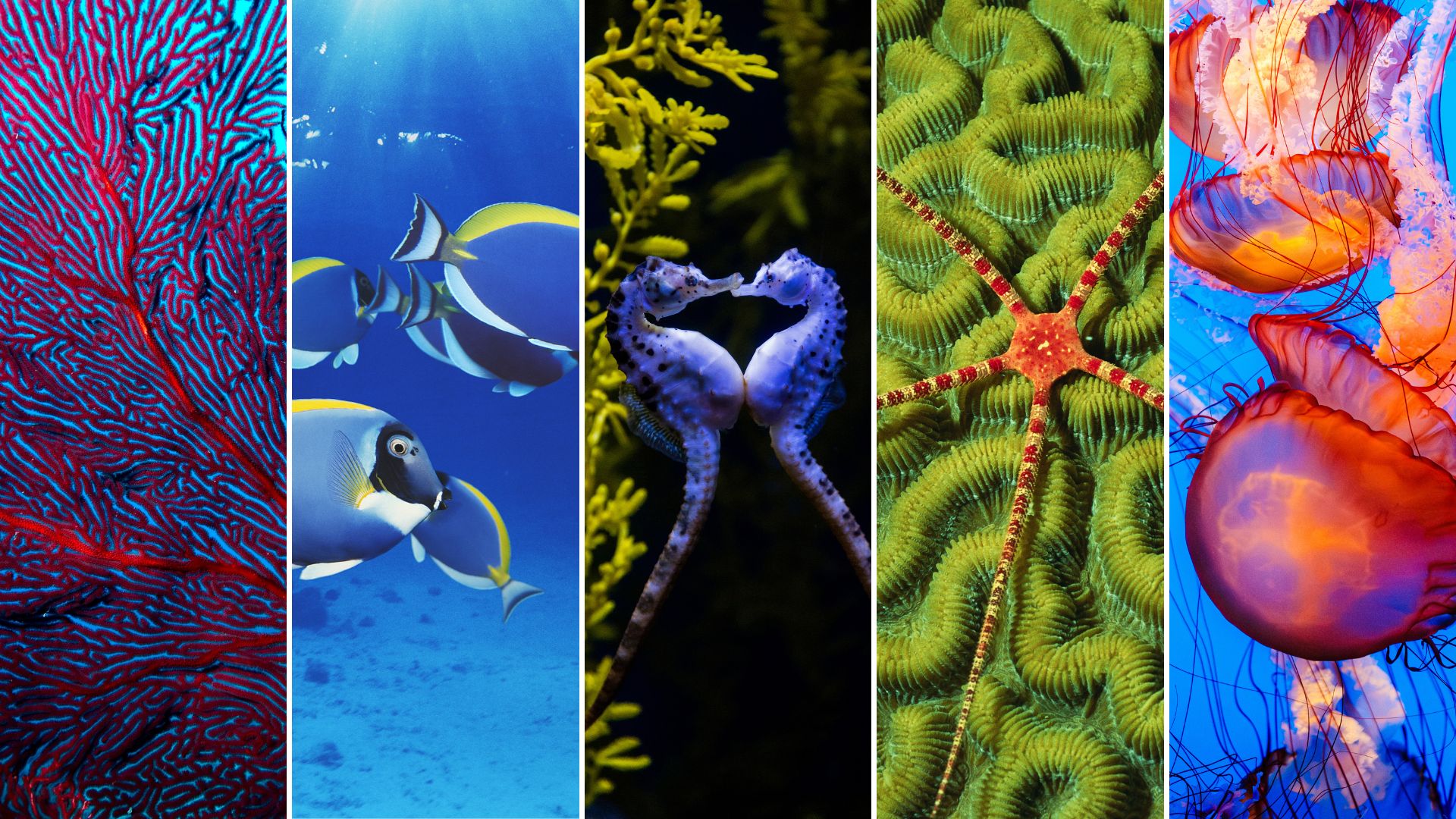
Since most of our planet is comprised of water - with the ocean making up over 70% of the Earth’s surface - there’s a lot to be discovered in the sea, and it’s a place that captivates at every turn.
As the largest livable space on Earth, the ocean’s waters teem with eccentric creatures featuring bold hues and unusual patterns. There are fish in every shade imaginable, gliding gelatinous jellyfish, mesmerising plants, and colourful coral, and even more exciting is that over 80% of it has not been seen or discovered by humans. Incredibly, we know more about the Moon than we do our ocean.
Deep sea divers and snorkelling enthusiasts have come some way in documenting this fascinating place, with tropical hotspots like the Maldive’s Baa Atoll, Belize’s Cayes, and the Galápagos Islands providing gloriously warm waters to explore. And of course, there are brilliant barrier reefs to explore too, from the world’s largest off the coast of Eastern Australia to Borneo’s Sipadan, where vast walls of coral hypnotize, drawing nature lovers from across the world to delight in their beauty.
Here, we take a look at some of the most incredible underwater sights and shine a spotlight on the fabulously bright sea creatures that grace the seas.
The most unique and colourful sea creatures on the planet
Yellow boxfish
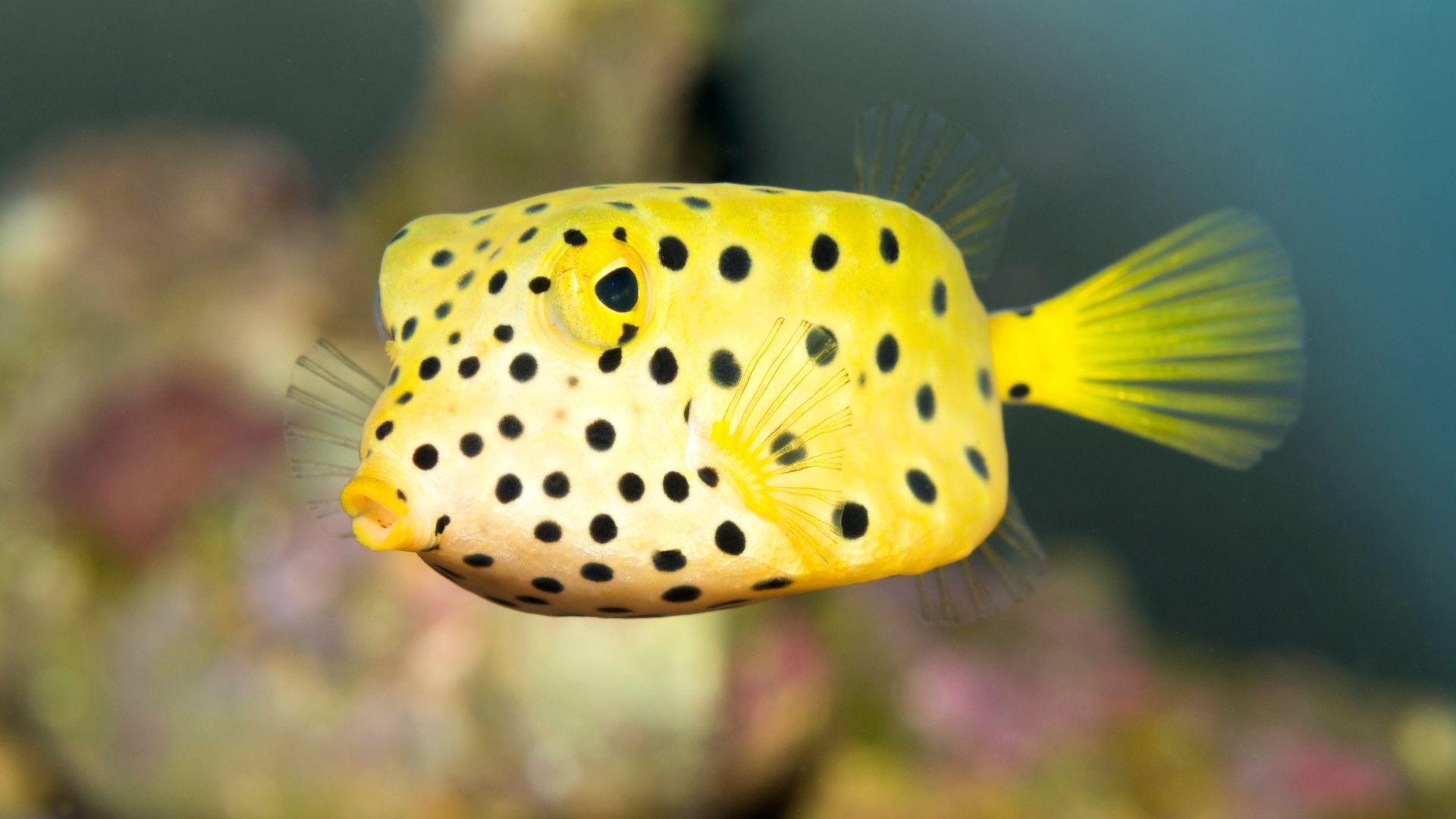
Found in reefs throughout the Pacific and Indian Oceans as well as the southeastern Atlantic Ocean, these jolly looking chaps feature an almost box-like shape (hence the name), a brilliantly bright yellow hue, and plenty of black polka dots. At full size, they reach about 45cm in length and feed on algae and other small fish.
Flaming red sea fan
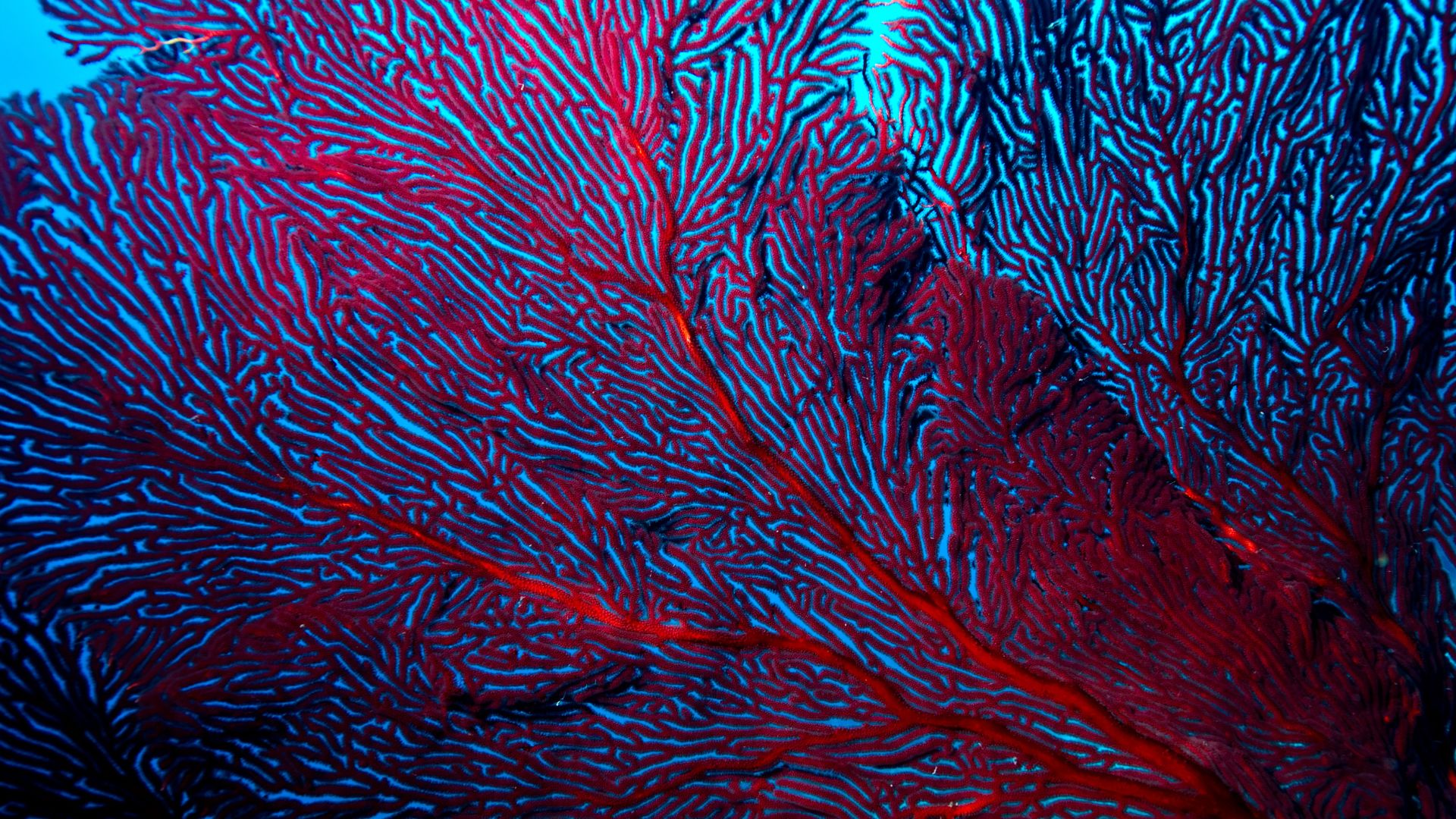
This captivating marine wonder, captured on Rabi Island in the Pacific Ocean is a type of soft coral often known as a flaming red sea fan. With delicate fingers, latticework, and branches of bold crimson, the coral is even more striking against the bright blue backdrop of the ocean and creates the perfect playground for small fish and sea animals.
Manta ray
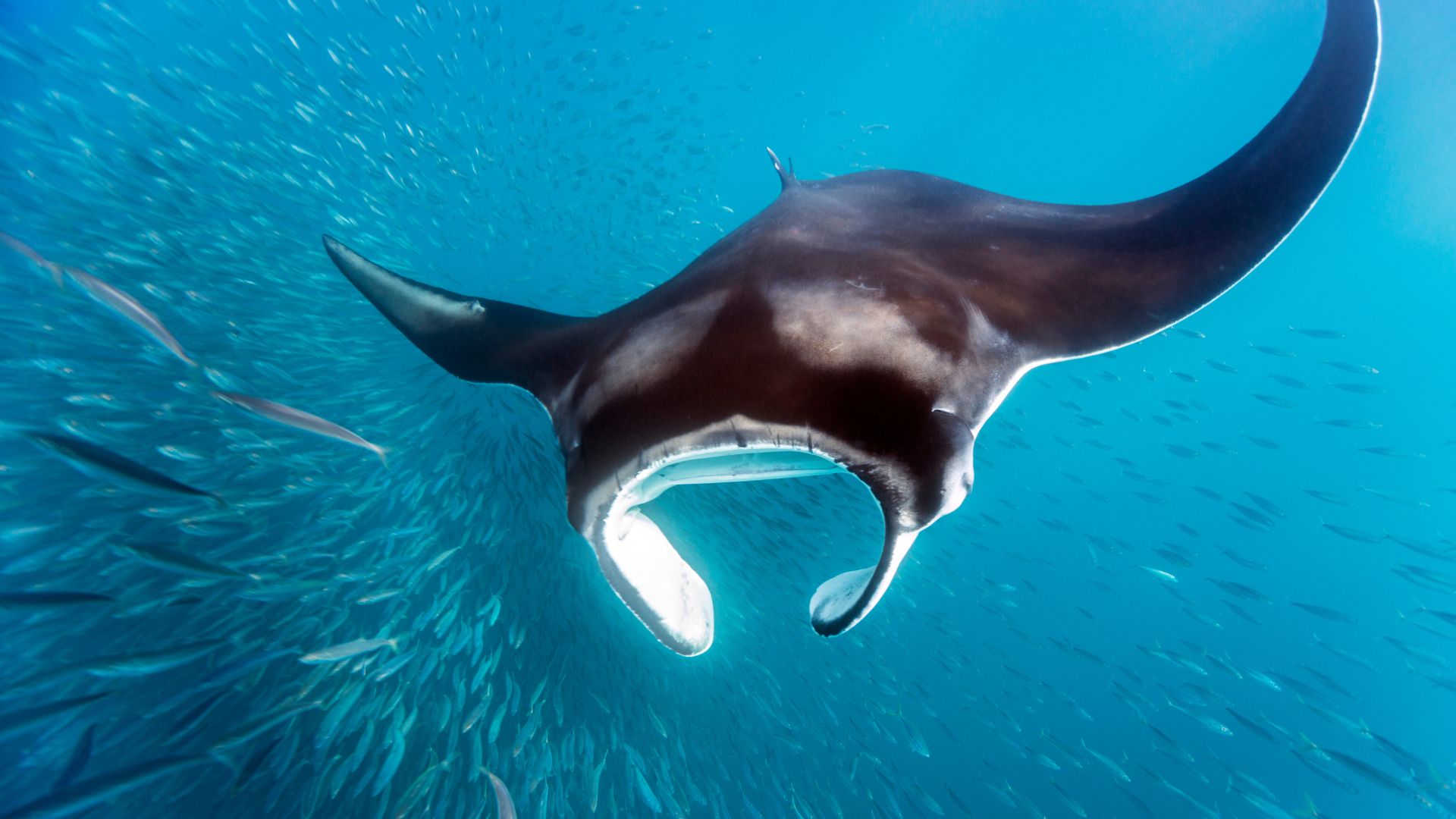
The UNESCO-protected bio reserve in the Maldives, Baa Atoll, is one of the best places in the world to spot and swim alongside beautiful mantas. Swirling and somersaulting like underwater angels feeding on glimmering plankton, these gentle giants of the ocean glide along elegantly in feeding chains providing the show of a lifetime. Aside from the Maldives, it’s possible to see mantas in Hawaii, Fiji and Australia.
Brittle star
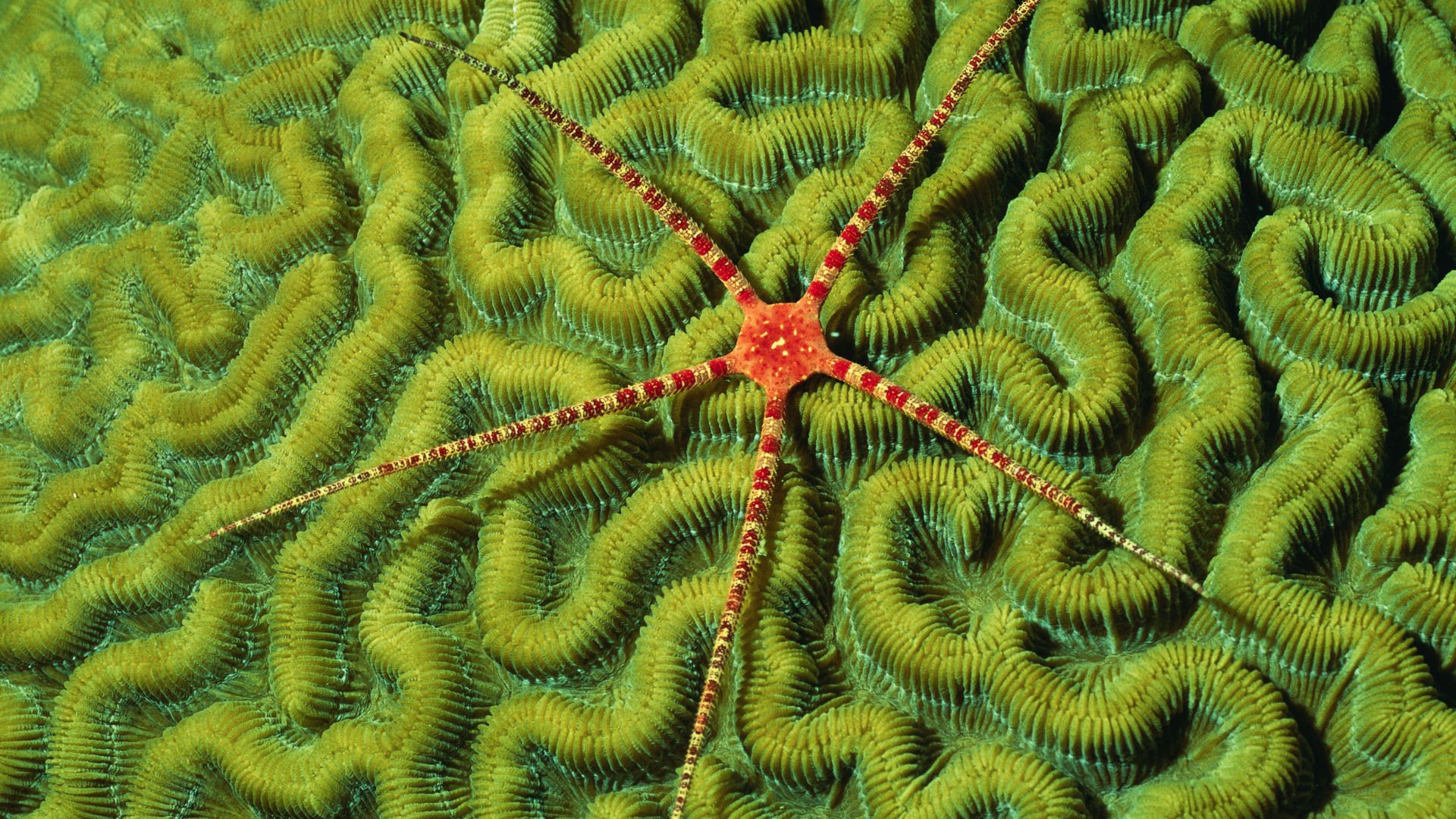
Sitting on a bed of neon-green Brain Coral, this bright orange and yellow brittlestar is positively magical with its spiny long arms that help it move along corals and the seabed. While most brittle stars have five arms, there are a few members of the starfish family with six, and each type lives for around five or six years.
Mandarinfish
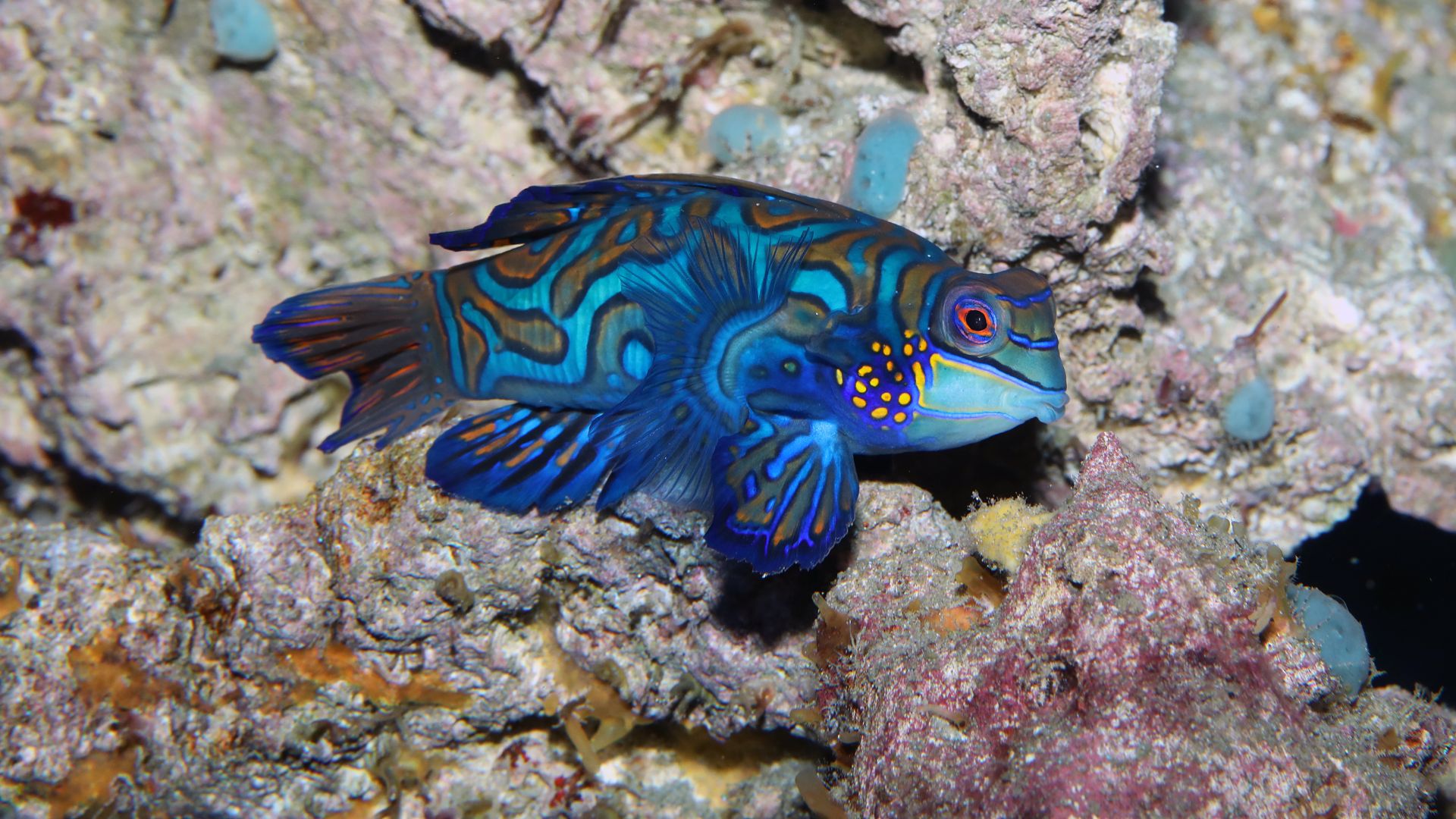
This small, super brightly coloured fish with whispy fins and amazing patterns is a member of the dragonet family and is native to the Pacific and the warm shallow waters around Australia. These fabulous fish love shallow inshore reefs and are so pretty that they’ve even been featured on postage stamps for use in Laos and Micronesia.
Grey triggerfish
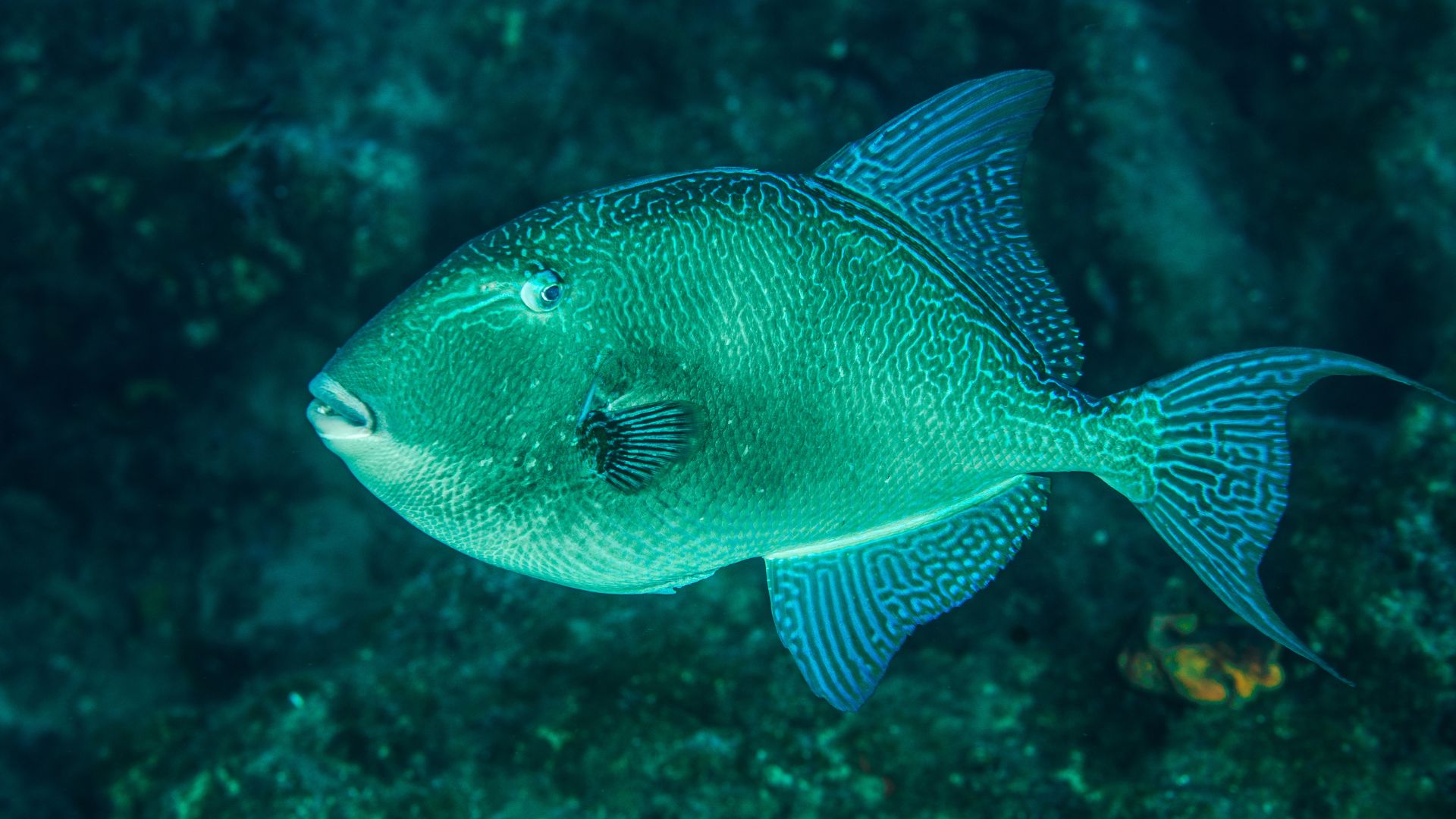
Spotted in the Aegean Sea, this grey triggerfish is not the brightest of the species, but it’s fascinating all the same, thanks to its beautiful marbled patterns. White and blue spots occasionally dot the dorsal fins and upper parts of the body, with the younger fish often being the most colourful (like most other types of fish).
Seahorse on flames
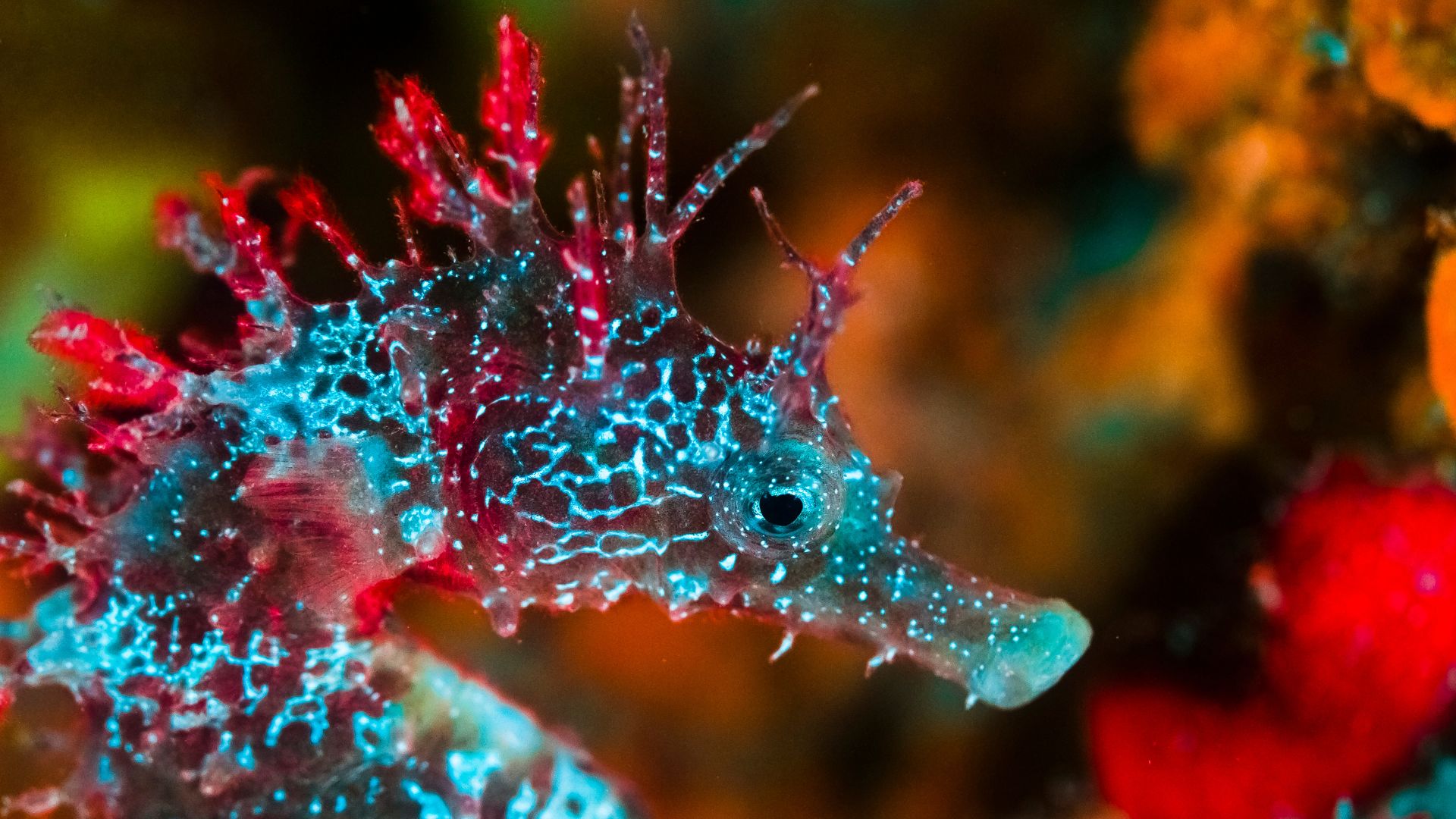
Also known as Hippocampus fluorescence, these whimsical creatures live in sheltered tropical areas, often amongst coral reefs and mangroves. This crimson and electric blue seahorse is particularly beautiful and like others in its family, doesn’t have scales, but rather thin skin stretched over the boney plates that make up its bodies. Due to the global deterioration of seagrass beds and coral reefs, and mass fishing trawls, seahorses could sadly face extinction in the very near future.
Lemon coralgoby
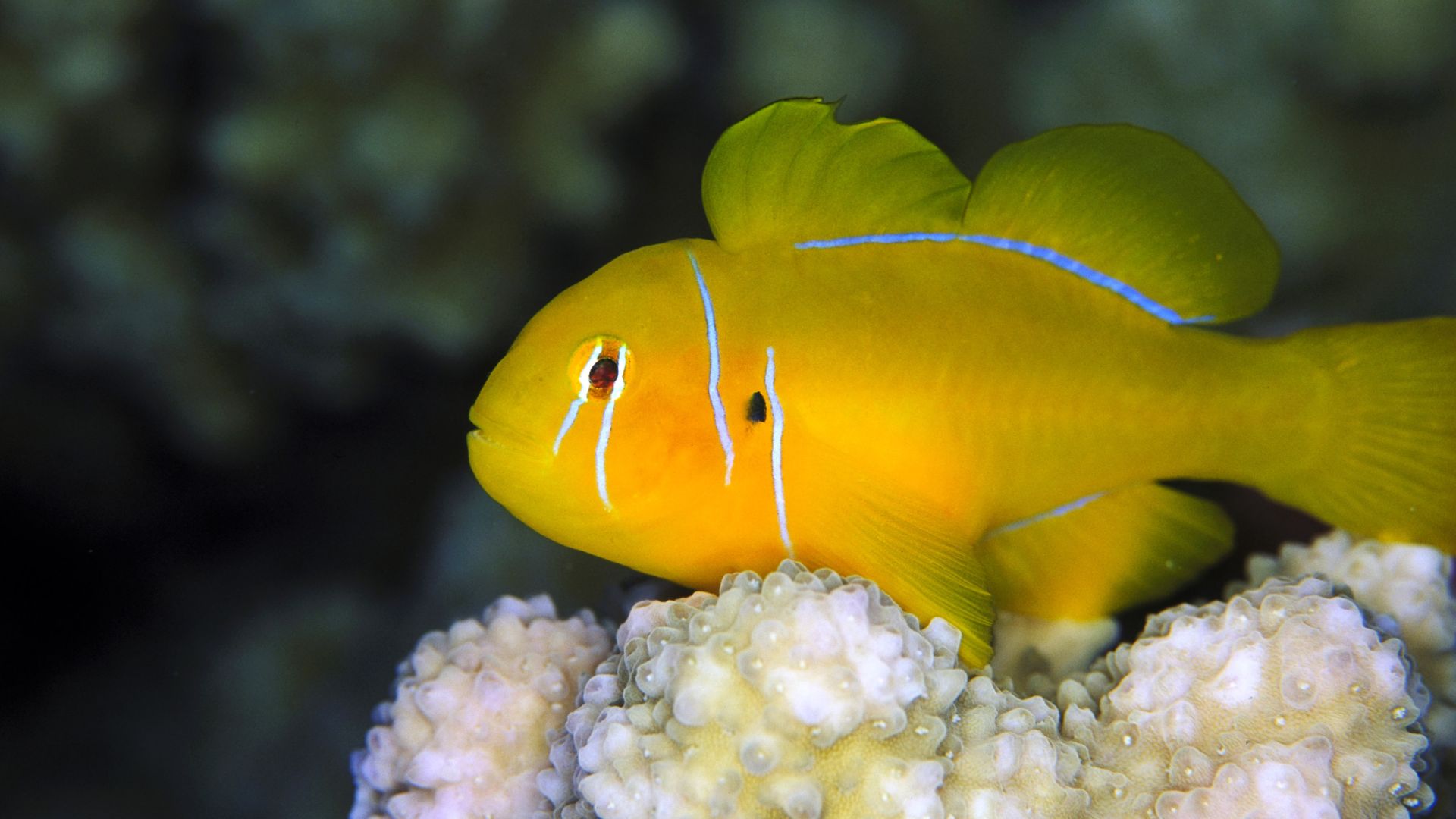
Photographed in the Red Sea, this dainty lemon goby might look harmless but produces a toxic mucus when threatened, giving it its nickname; poison goby. With its bold yellow body and almost fluorescent bright white stripes, including fun stripes across its eyes, the photogenic fish is mostly found in the Indian Ocean and likes to swim around shallow reefs.
Pacific sea nettle
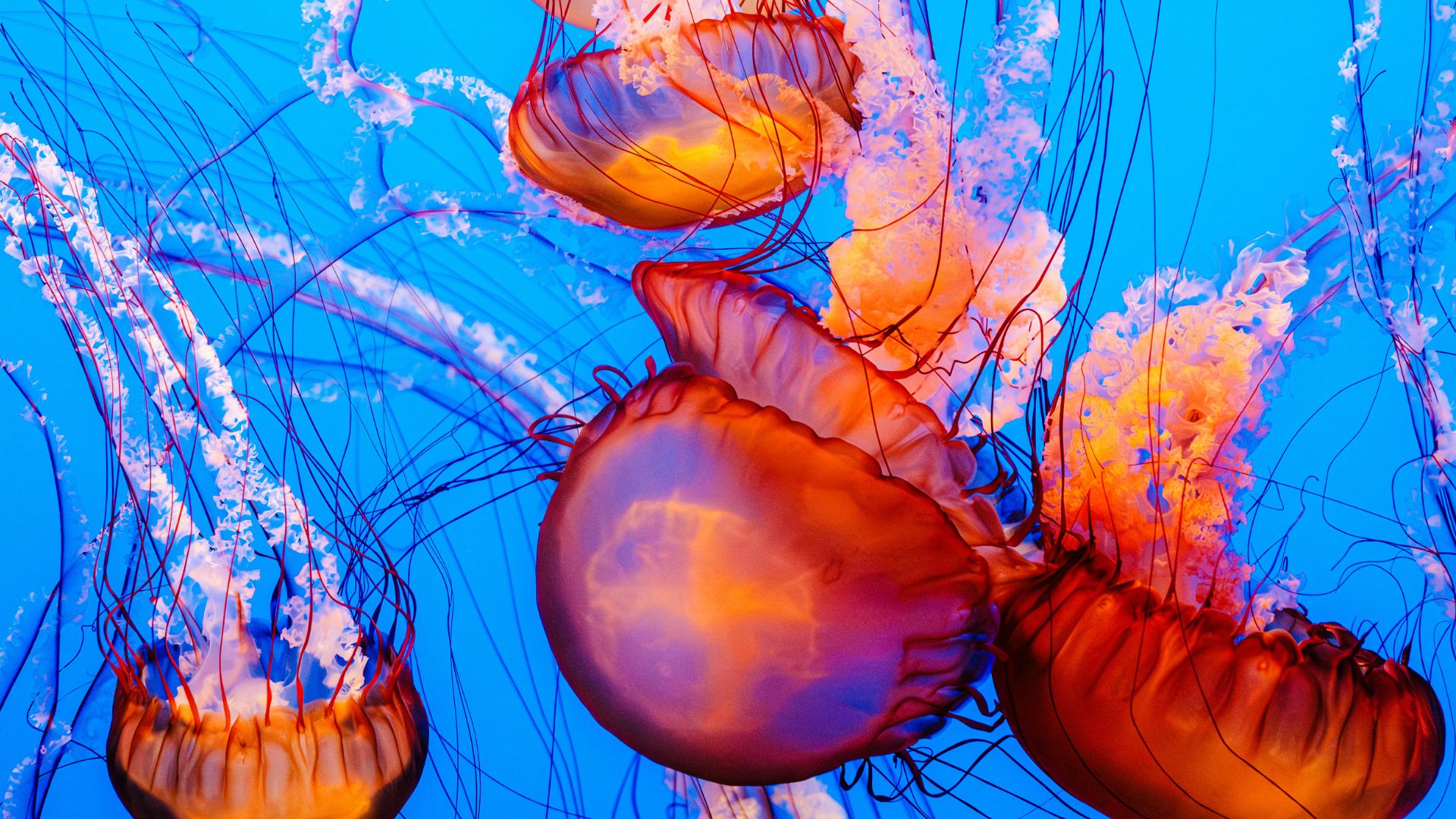
The brilliantly named Pacific sea nettle is a red-tinted jellyfish that lives in the northeastern Pacific Ocean. Taking its name from its sting, which is not unlike the effect you get from the common stinging nettle, the Pacific sea nettle’s crimson tentacles can reach as far as 15 feet but only have a short life span that barely reaches six months. Although painful on contact the beautiful creatures put on a marvellous show when swimming together and are wildly photogenic.
Fluorescing hard coral
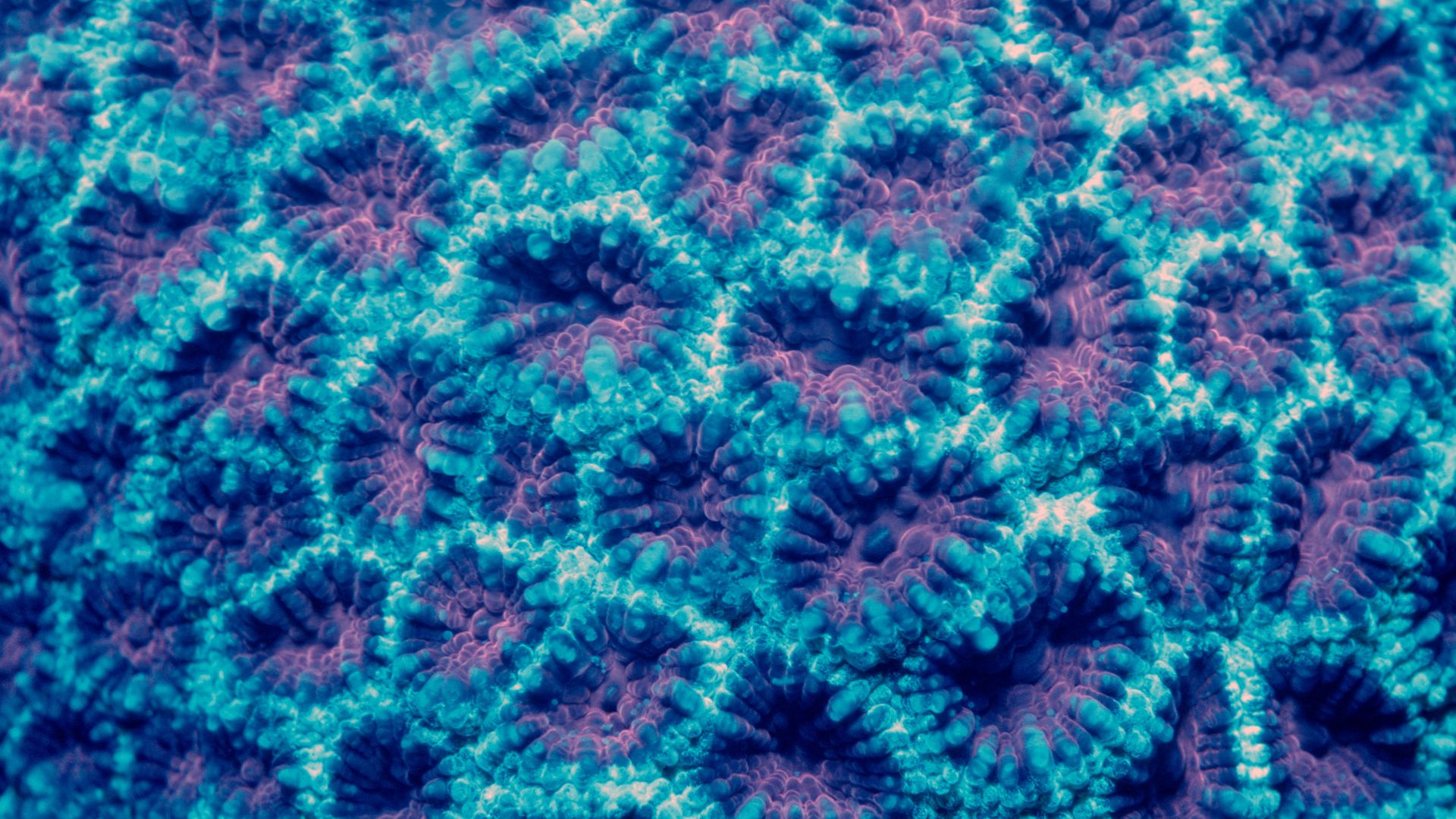
Found in Komodo National Park, this sprawling expanse of hard coral features intricate shapes and patterns and a plethora of stunning shades, from aqua and turquoise to indigo, purple, and baby pink. Indonesia’s Komodo National Park is ideal for fans of snorkelling since the water teems with healthy and bright corals, cuttlefish, and plenty of tiny fish in an array of rainbow shades.
Blue ringed octopus
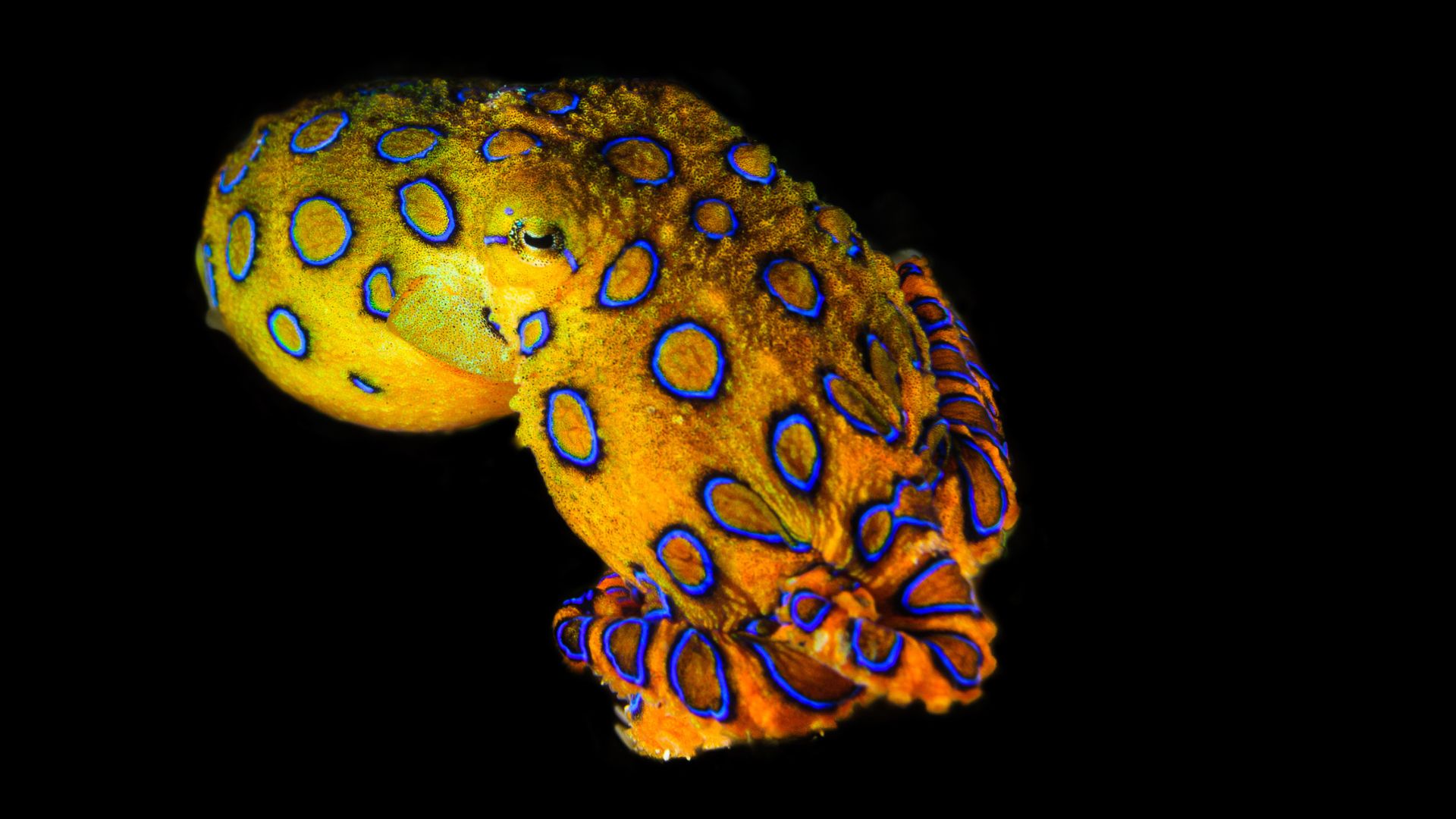
Sometimes it's hard to comprehend whether the natural world is even real, such is its beauty, and that’s entirely our thoughts when we set eyes on the striking blue-ringed octopus for the first time. Found in coral reefs and tidal pools, the dazzling beauties can change shape and colour easily when threatened, morphing from bold orange to beige, and allowing them to blend into the seabed. Extremely venomous, they’re mostly found in the shallows of the Pacific and Indian oceans, with this fellow being snapped just off of mainland Indonesia.
Powder blue surgeonfish
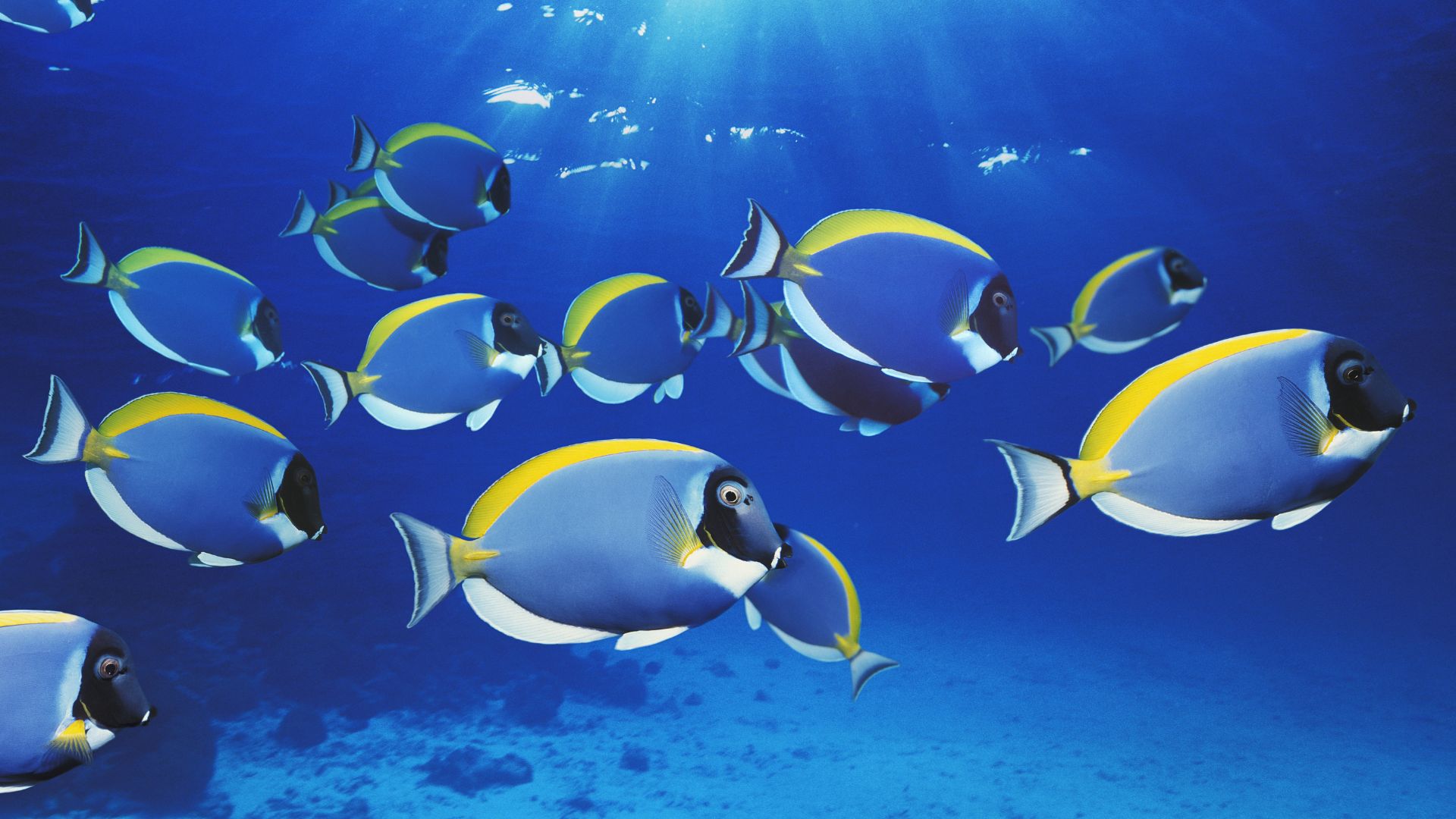
This shoal of powder blue surgeonfish was likely photographed in the Indian Ocean where the striking fish feed mostly on algae. The beautifully coloured fish prefer flat-top reefs and are common in the waters surrounding Sri Lanka as described as far back as 1833 by the British zoologist, Edward Turner Bennett.
Mauve stinger
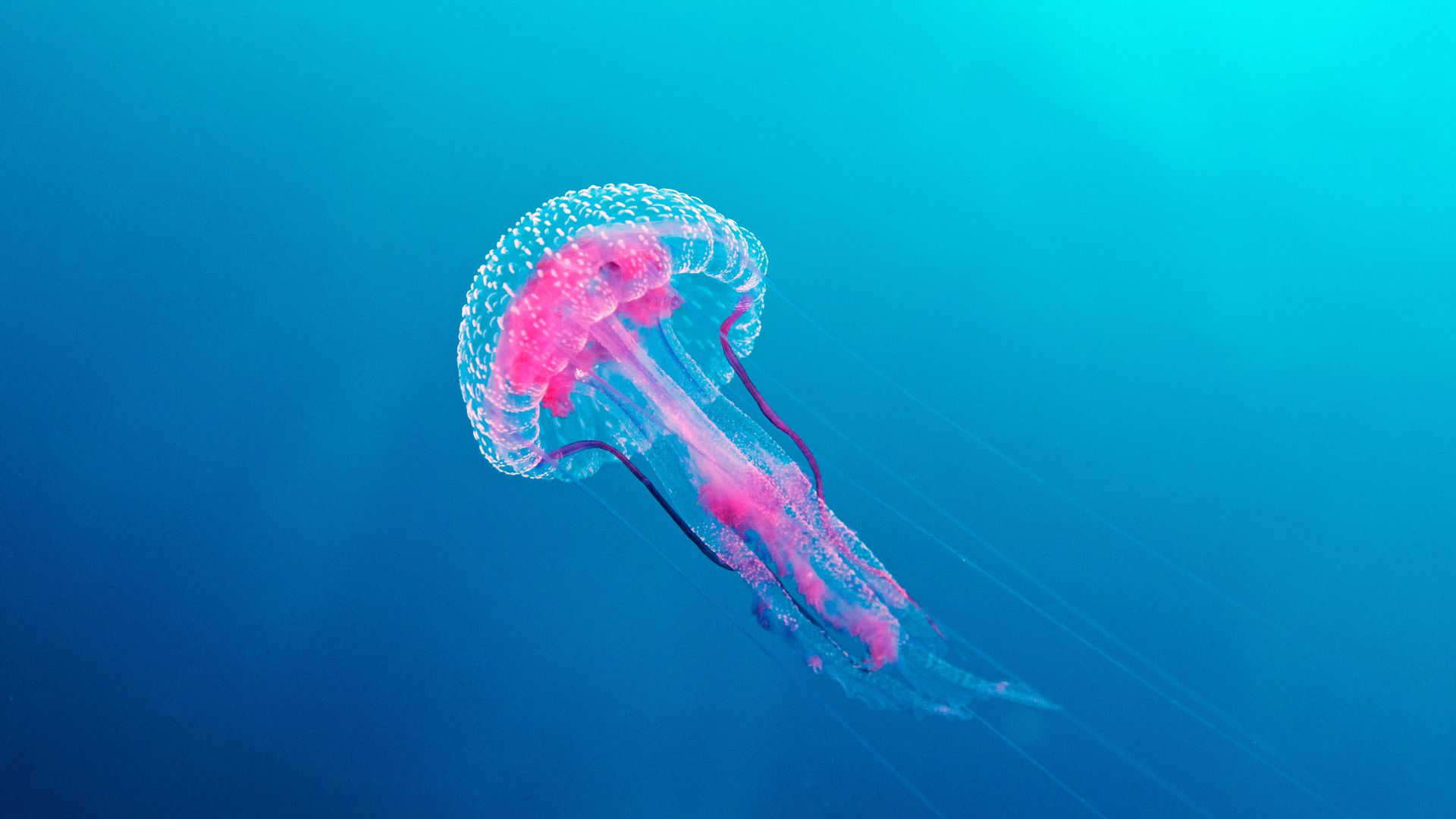
Otherwise known as a purple-striped jelly, this mauve stinger was snapped in the Maldives’ clear turquoise waters providing a truly magic image as the hot pink pops out against the blue. Due to their poor swimming ability, huge swarms (sometimes reaching millions) of mauve stingers occasionally wash up on beaches or in waters outside their regular habitats since winds and tides sweep them away.
Royal gramma
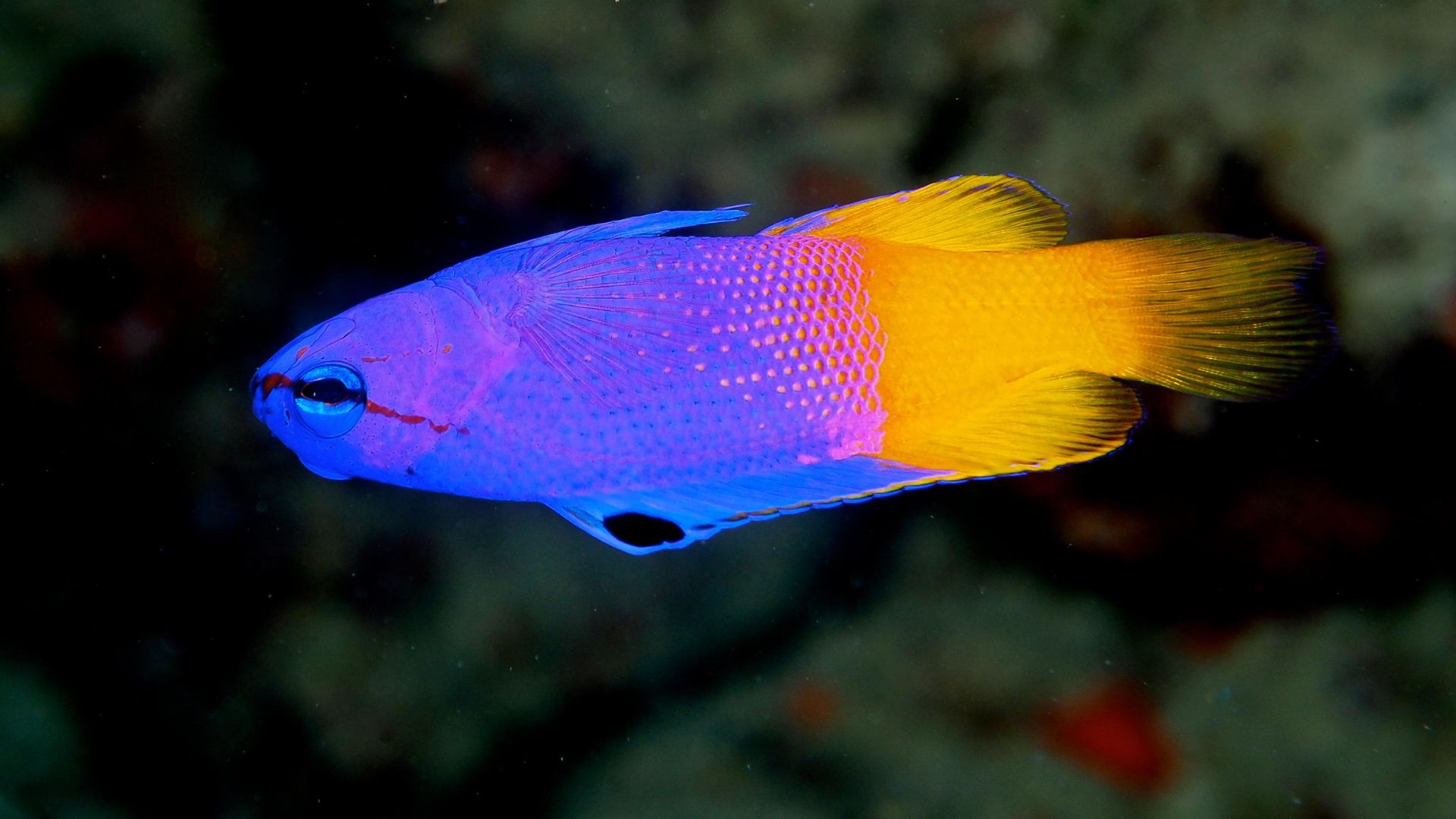
The super shy but wonderfully coloured royal gramma can be found at dive sites around the Bahamas and Bermuda, as well as in the waters surrounding Central America and the northern part of South America. This one was snapped in Costa Rica, close to Puerto Viejo de Talamanca and showcases the fishes colours beautifully, fading from bright blue to purple and pink before merging into orange and yellow.
Blue clam
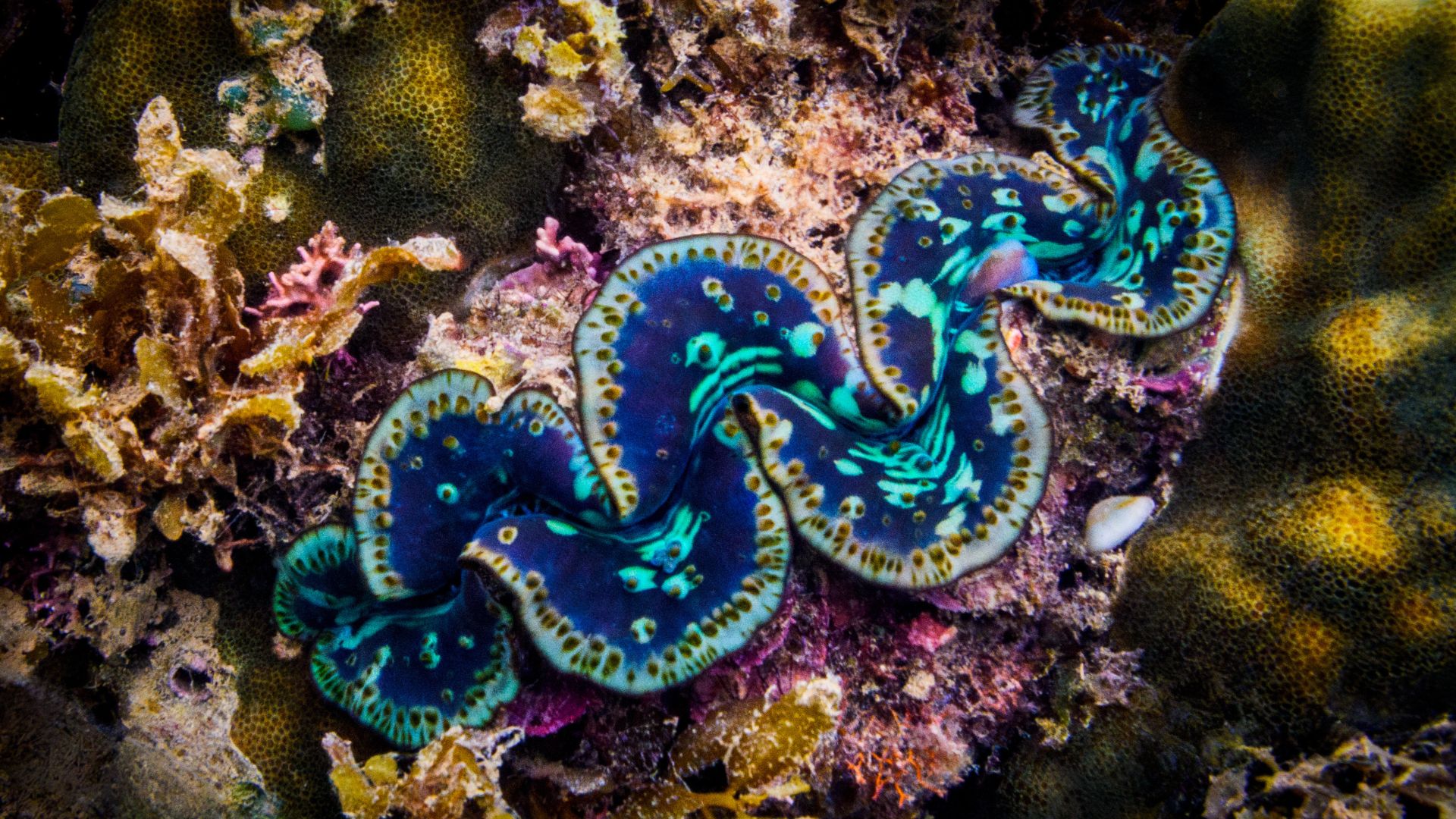
Like many of the tropical fish in this edit, this wonderful blue-lipped clam feeds on algae and prefers the warm shallow waters of the Indian Ocean. The turquoise-specked blue inner lips are the result of crystalline pigment cells that protect the clam from strong sunlight, in turn giving it a unique and beautiful appearance unlike any other sea creature.
Clown triggerfish
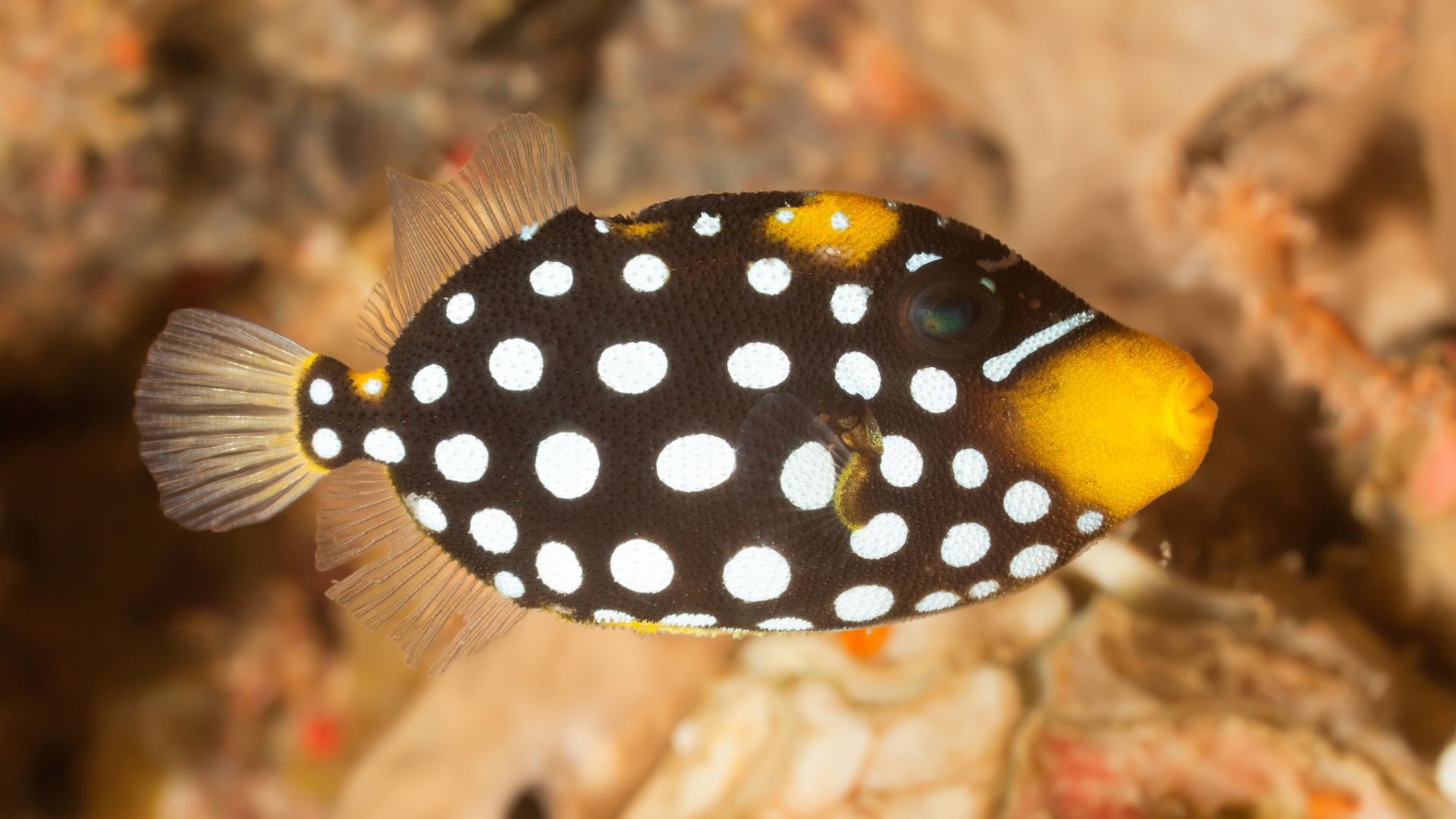
Snapped in Sulawesi, Indonesia, this Juvenile Clown Triggerfish is still smallish in size but can reach up to 50cms when fully grown. Featuring a stunning pattern of bright white spots, the pretty fish lives a solitary life that spans almost 20 years, often in coral reefs throughout the tropical and subtropical waters of the Indian Ocean.
Lionfish
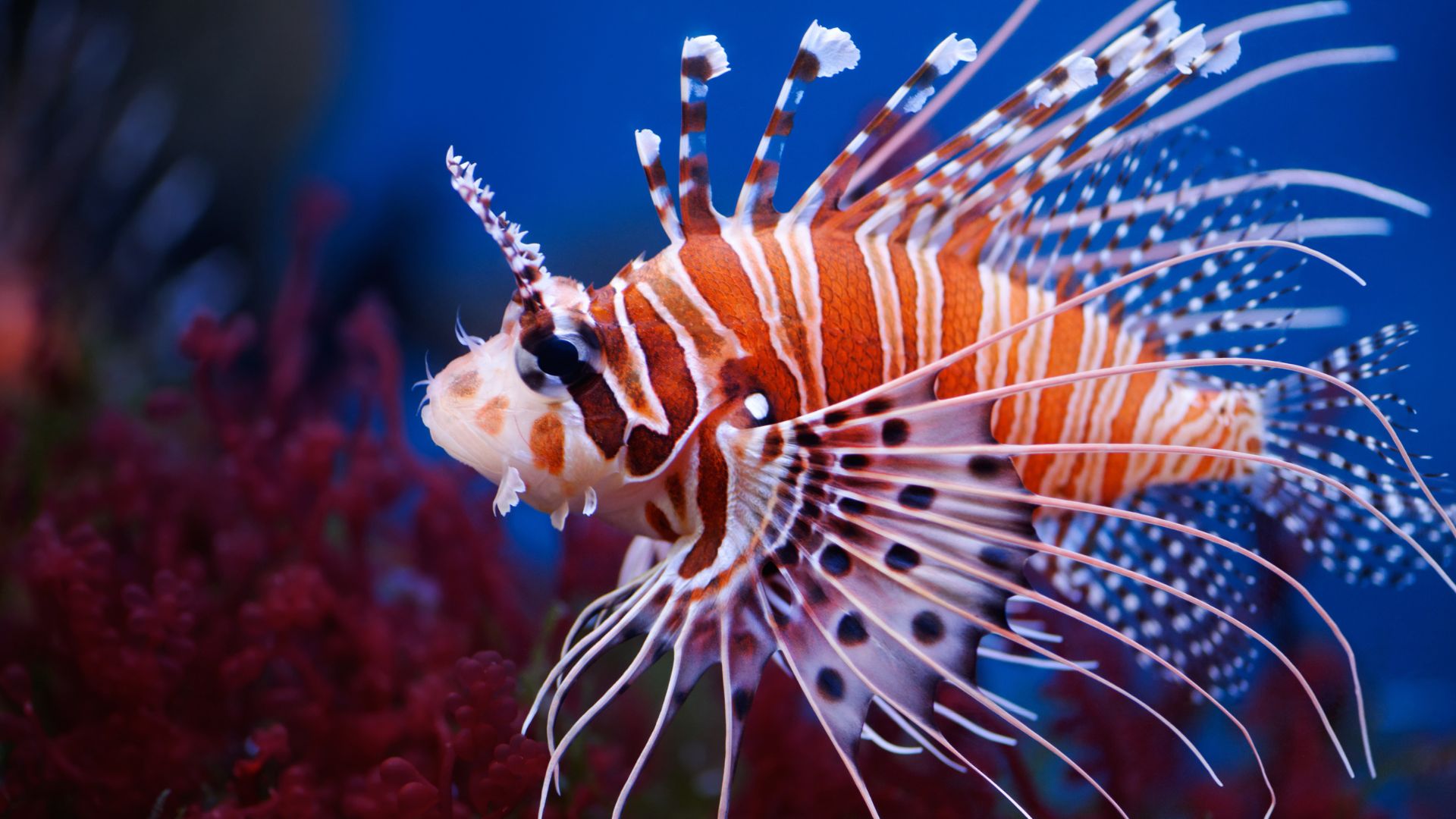
With an orange and cream colour palette, patterned fins, and delicate spines, lionfish seem to be straight out of a fairytale book, thanks to their whimsical appearance. Hostile towards other sealife, the lionfish dwells in shallow reefs and is commonly found down to depths of 100 metres.
Sea turtle

Reaching sizes of up to 1.8 metres, the sight of a sea turtle in its natural habitat gliding through crystalline waters is a sight to behold. While this one was photographed off the island of Mauritius, sea turtles can be found in all oceans, aside from those in the polar regions with leatherback sea turtles taking the crown as the largest.
Yellow and blue damselfish

This striking yellow and blue damsel typically feeds on algae, plankton, and small crustaceans and lives a solitary life, (occasionally in pairs) in the tropical waters of the Indian Ocean. Painted in vivid hues, the damselfish blend seamlessly into healthy coral reefs where coral spans all shades of the rainbow.
Turquoise discus
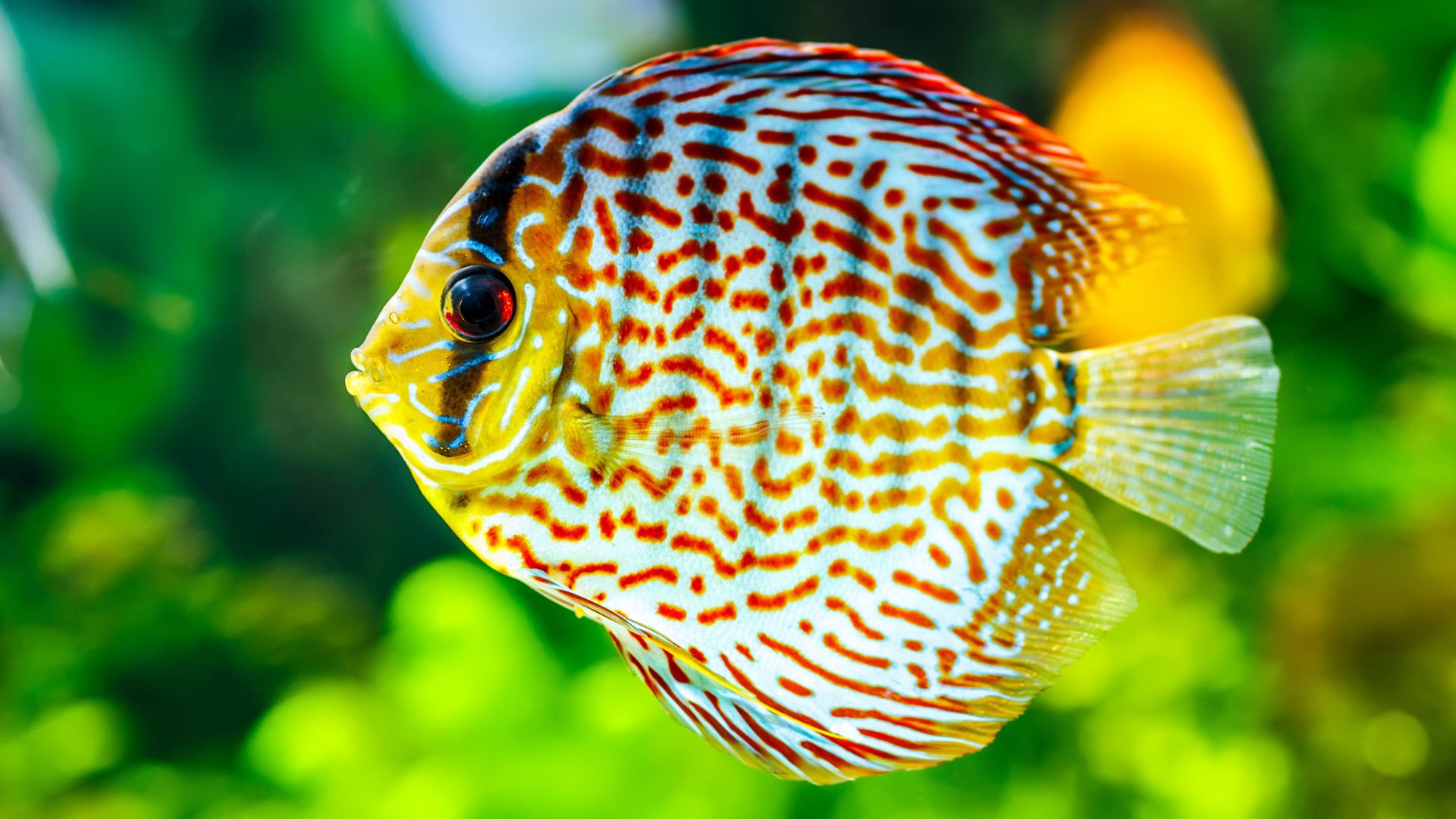
Hailing from the Amazon River basin, the discus prefers freshwater rivers, floodplains, and lakes, rather than seawater. Featuring a large flat-ish, round body, discus has been spotted in a wide range of colours, often with elaborate patterns and markings, making them an extremely popular fish.
Potbelly seahorse
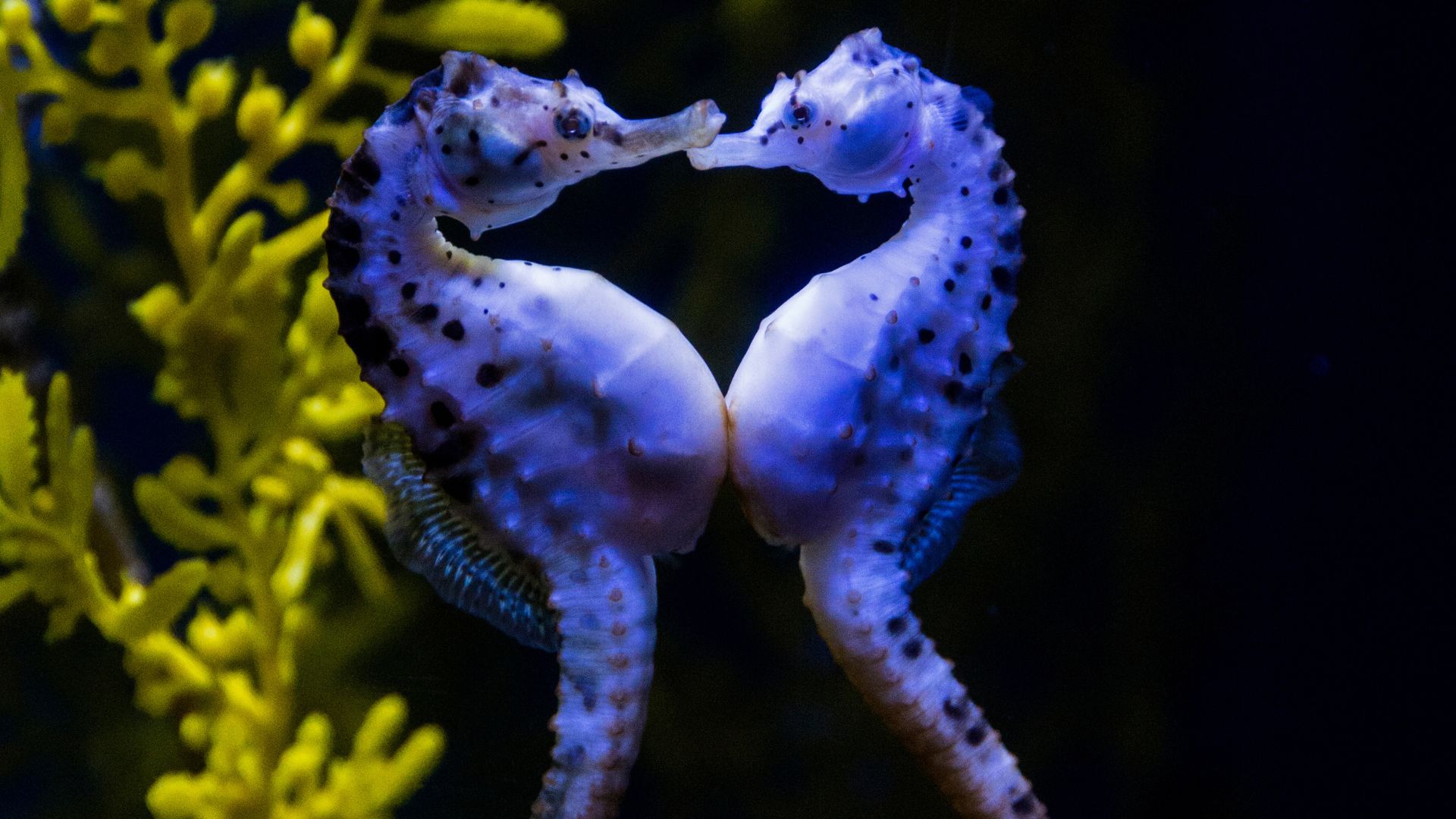
As one of the largest seahorse species in the world, the pretty pot-bellied seahorse is also one of the most striking. Found in rockpools in southeast Australia and New Zealand, they have a long-snouted head, pot belly, and like most other types of seahorse, a long, coiled tail.
Clownfish
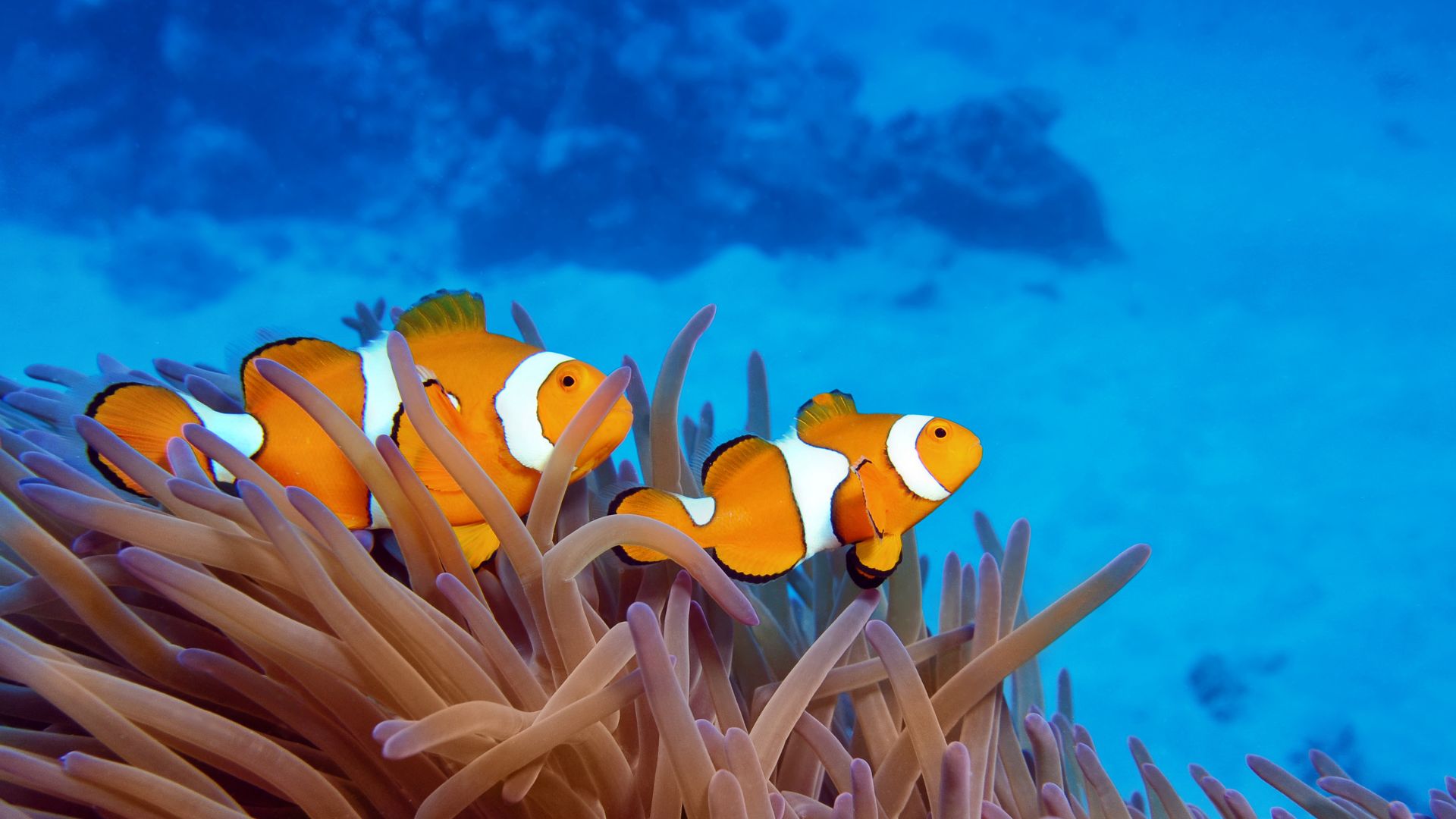
Spotted swimming through sea anemones in Australia’s Great Barrier Reef, these joyful-looking clownfish feature the typical bright white markings of the famed fish with bold orange scales and delicate black-lined fins. Amazingly, there are around 30 different types of clownfish dwelling in our planet’s ocean living in the warm waters of shallow reefs and lagoons.
Square-spot fairy basslet
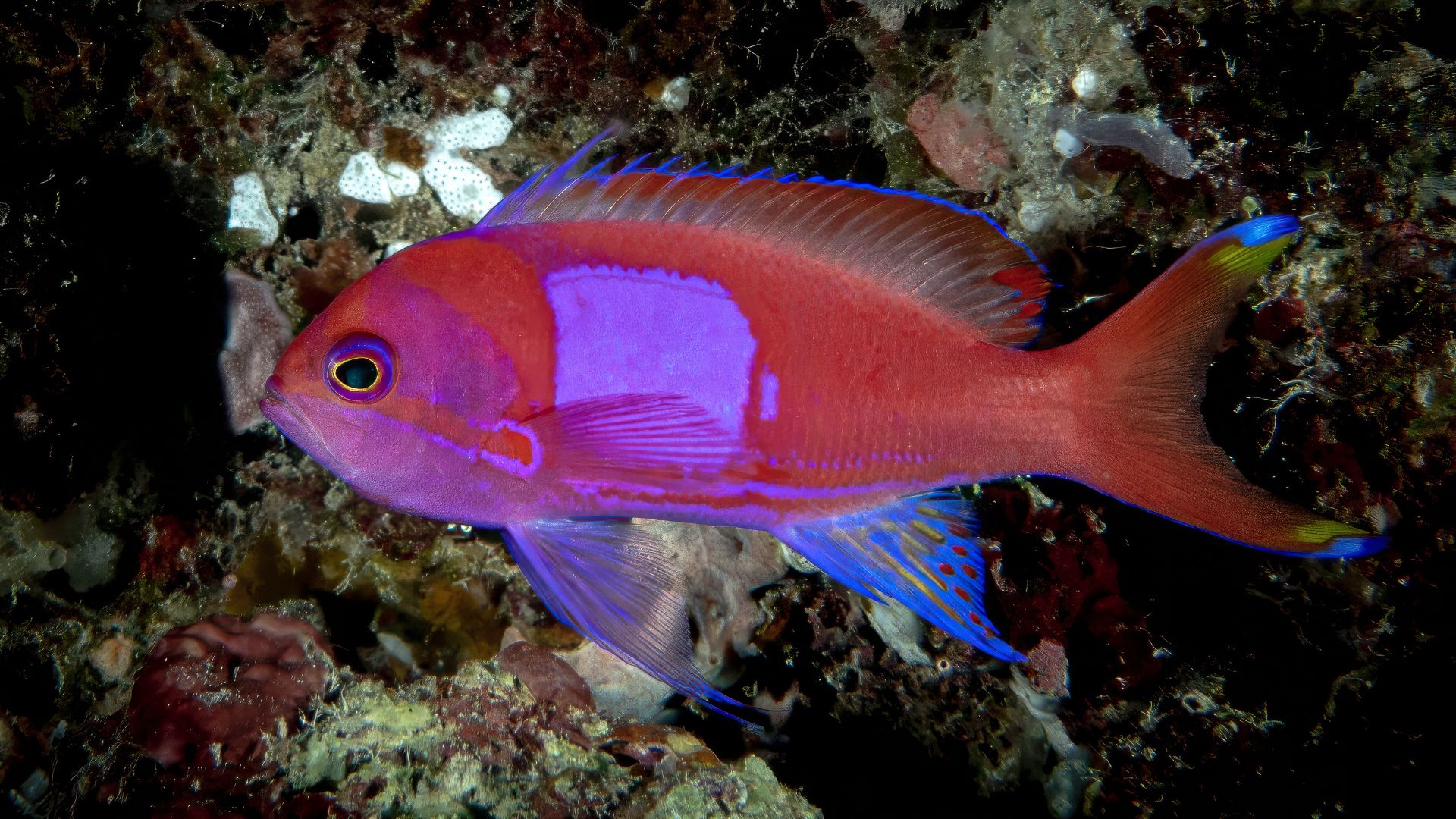
Proving that pink and red is one hot colour combination, this male square-spot fairy basslet is one of the boldest fish around, often found swimming around the reefs of the Pacific Ocean. Females, on the other hand, aren’t quite so flashy, with a more yellowy base colour streaked through with purple.
Favia coral
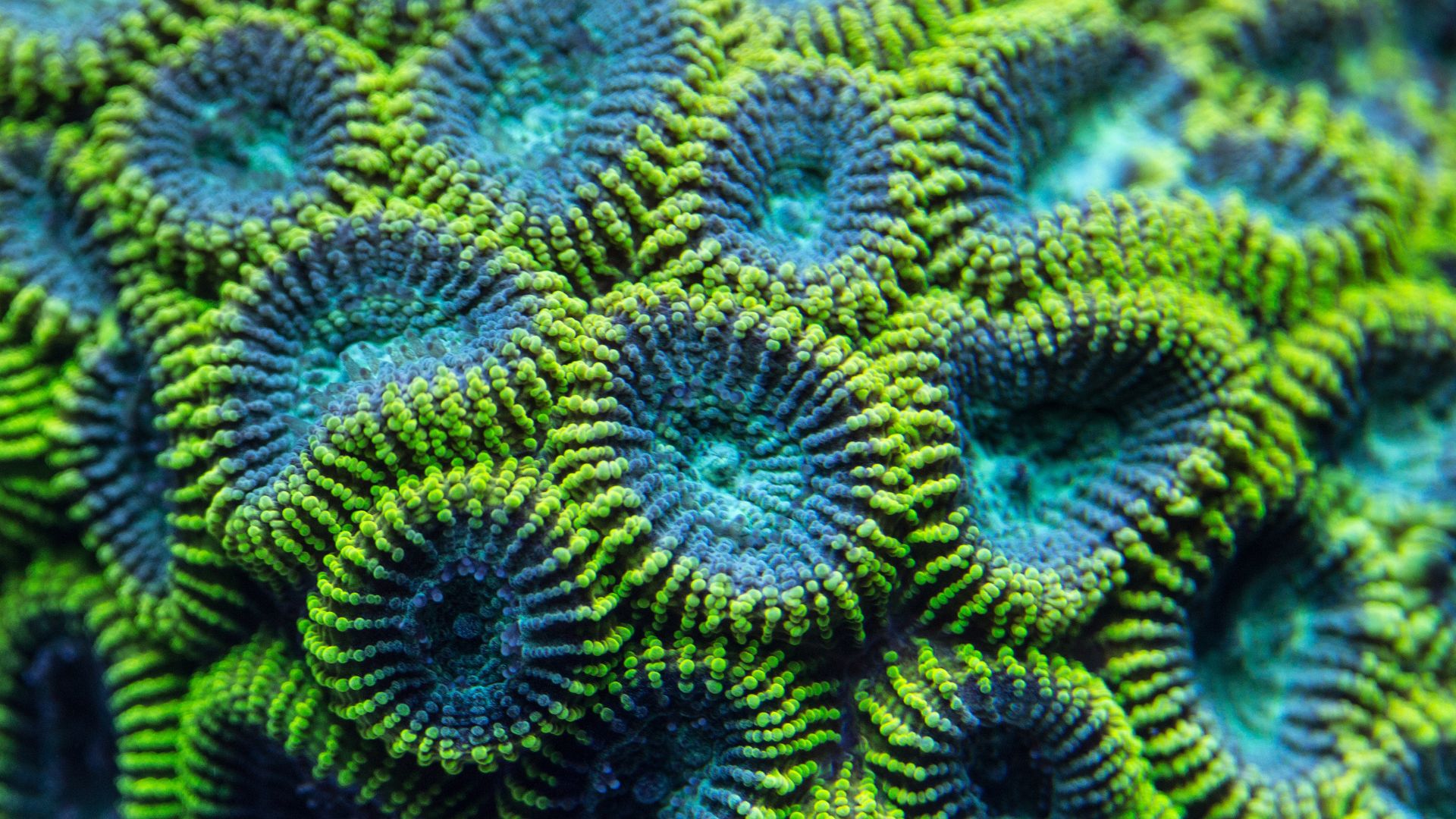
This colony of textured green favia coral proves just how spectacular nature can be with its contrasting shades of neon green and teal. The surface dazzles with tight maze-like geometric patterns, often giving it the nickname, golfball coral. Often spotted in tropical waters of the Atlantic Ocean, you’re going to want to make sure you have an underwater camera handy if you spot this impressive beauty in real life.
Unicorn fish
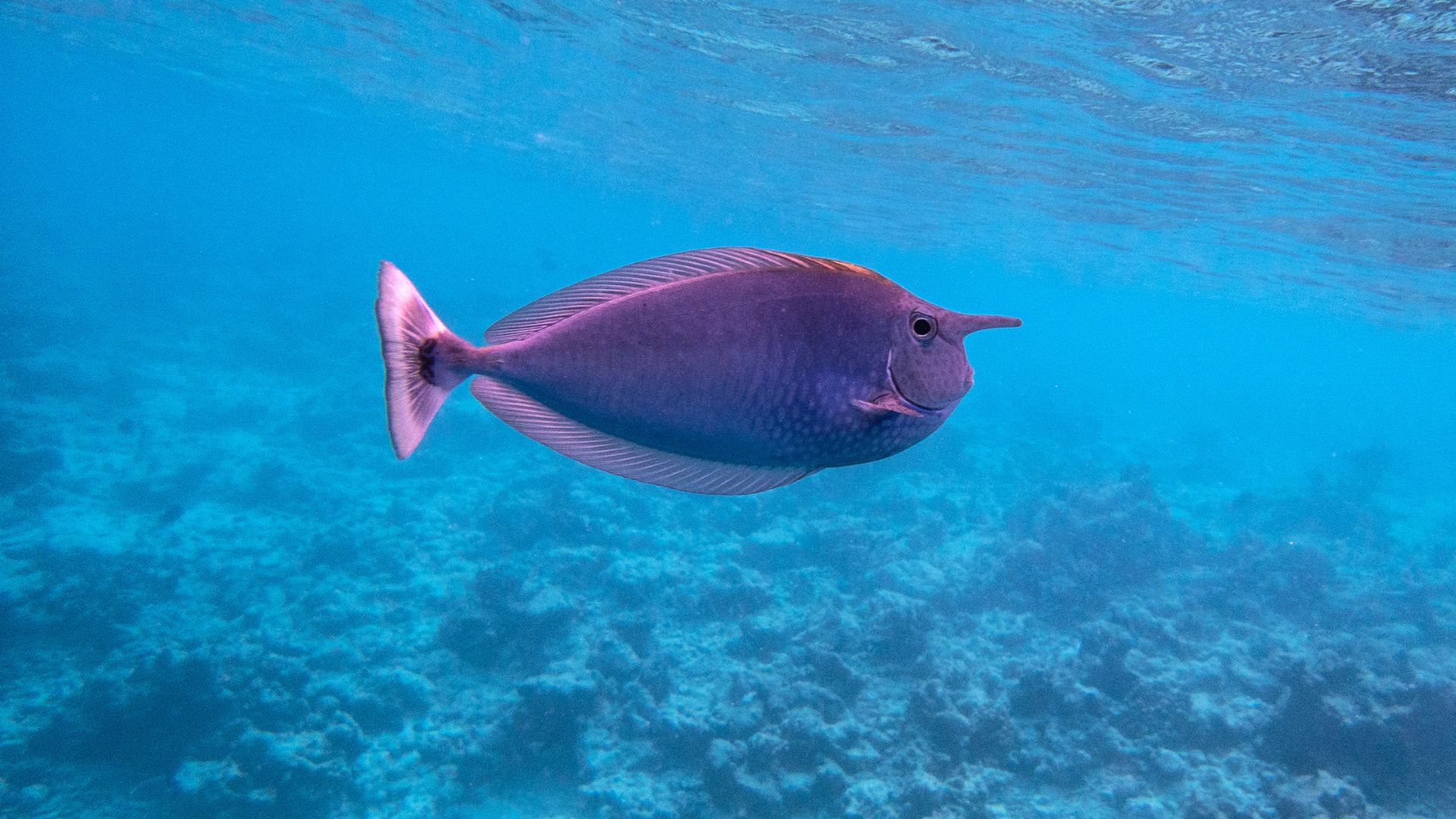
These curious creatures with their hornlike protrusions - likening them to unicorns - are found in abundance through the Maldives, but due to rising seawater temperatures that could all change in years to come as increasing numbers of coral are dying off. Part of the Naso family, in which there are 20 species, the unicorn fish mostly eats algae and enjoys the warm shallow waters of the Indian Ocean.
Emperor angel fish
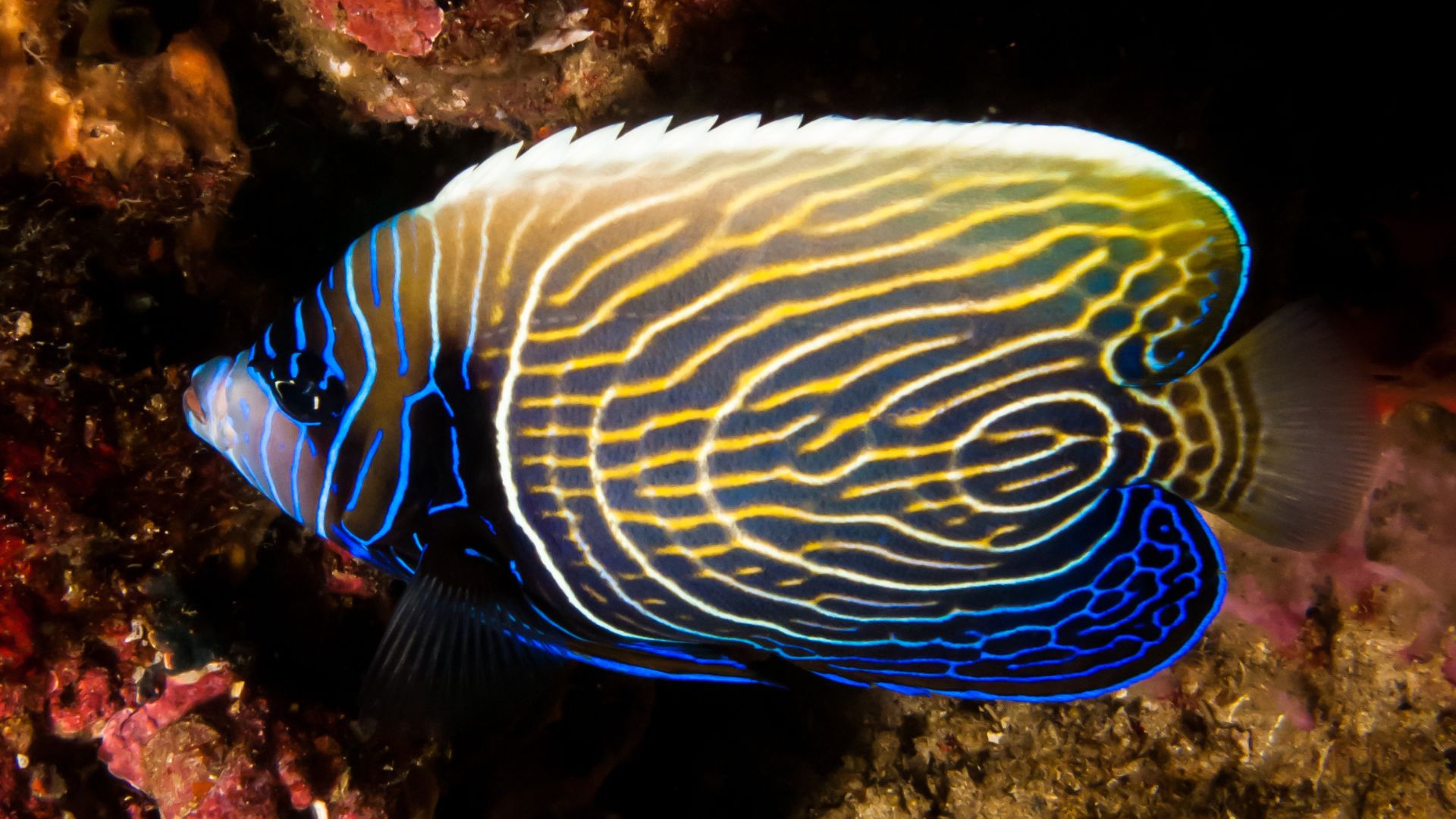
Reminiscent of secret mazes, this young emperor angel fish features glorious markings of yellow, blue, and bright white on a black background, making it a favourite for underwater photographers. Almost psychedelic in appearance, the emperor angel is native to the Indian and Pacific Oceans, where they group under ledges and in caves.
Cannonball jellyfish
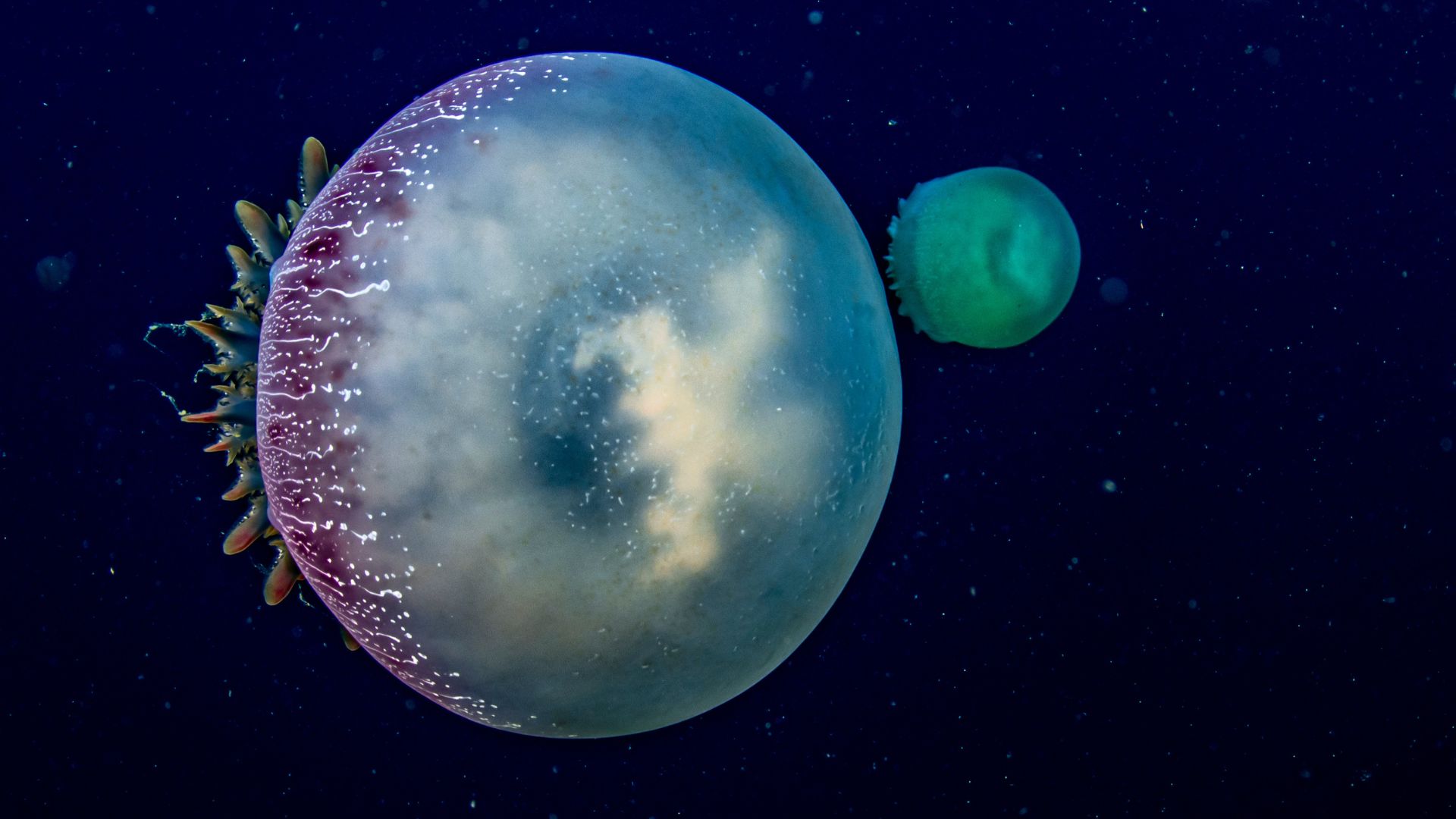
The mythical-looking cannonball jellyfish truly are a sight to behold, especially on full moon days when they are often spotted grouped together, swimming en masse. This particular image was captured in Chichiriviche de la Costa, Venezuela, when a large aggregation of thousands of cannonball jellyfish swam across the bay creating a magical experience for anyone watching.
Majestic angelfish
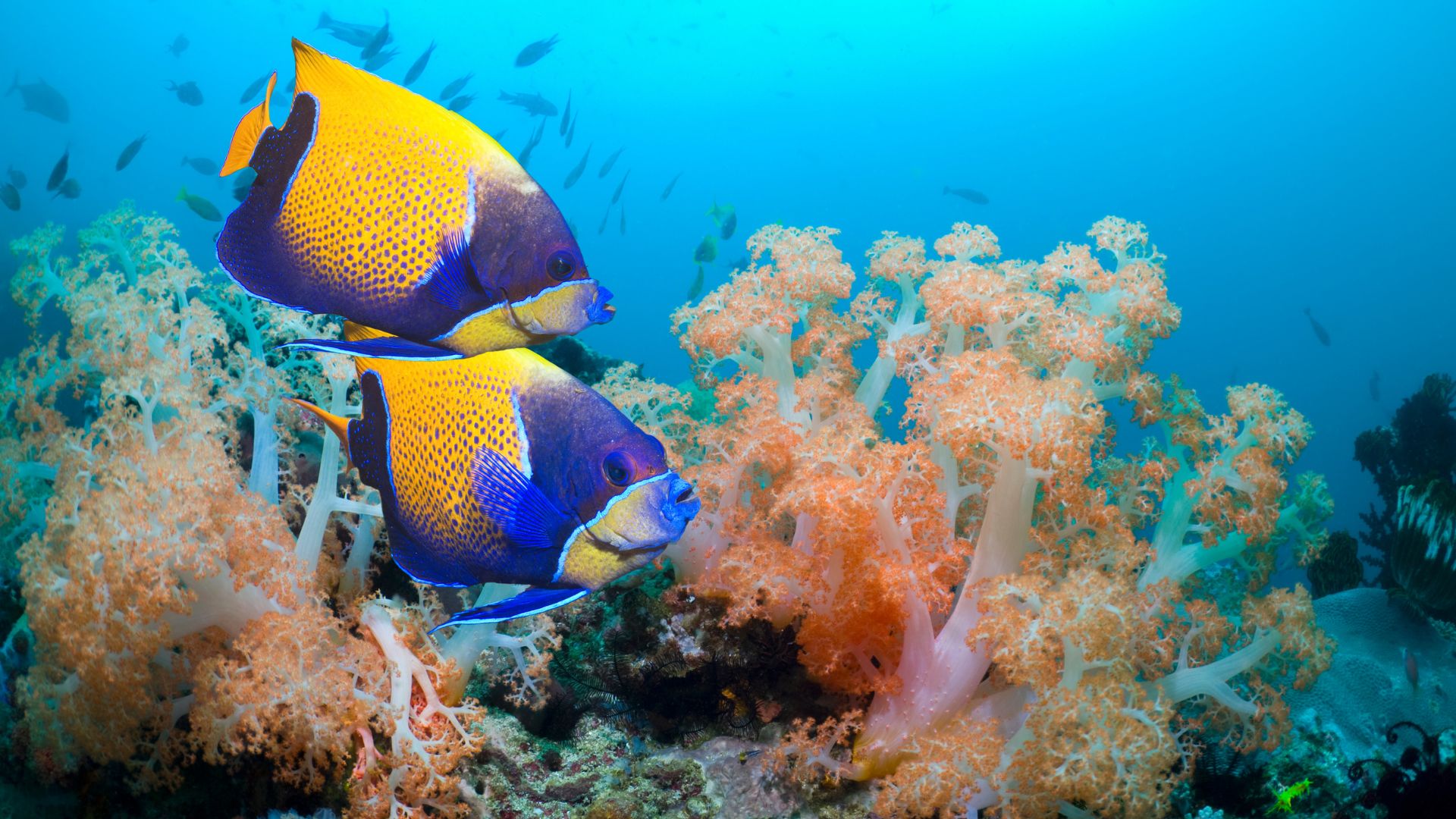
Swimming past soft corals in the Komodo National Park of Indonesia, these elegant majestic angelfish can live up to 21 years, changing in colour from dark blue to yellow as they mature. Featuring a myriad of bold shades and intricate patterns, they stand out as one of the most beautiful fish in the ocean.
Necklace starfish
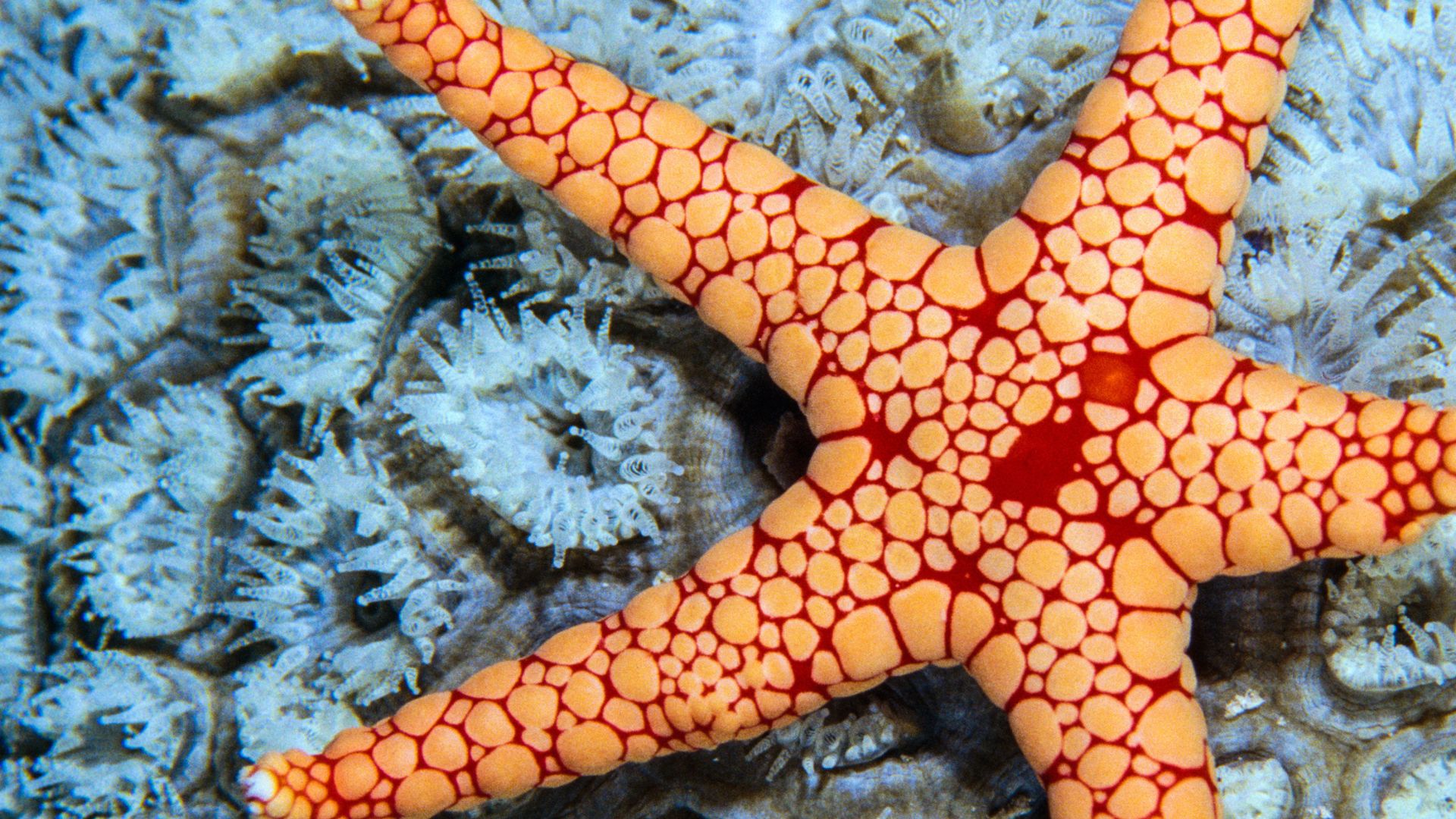
Sitting on white coral, this red and orange necklace starfish looks like it's almost been created from gemstones or jewels. The enchanting creature has the usual five arms and lives in the ocean at depths of up to 50 metres, preferring the warm waters of the Indian Ocean.
Spotted rabbitfish
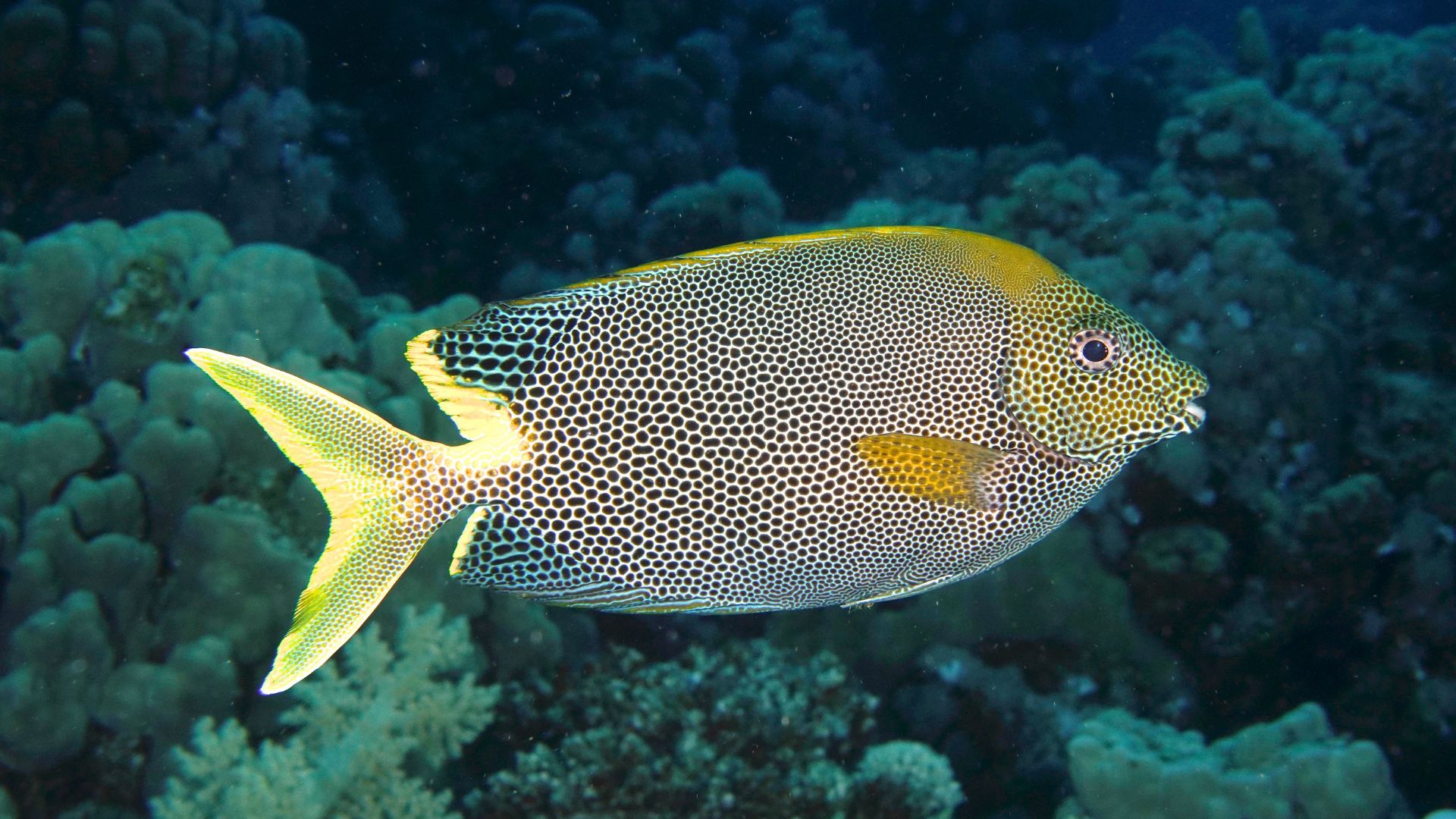
In Mangrove Bay of the Red Sea, Egypt, you’ll likely see these spotted rabbitfish with their perfect polka-dot print covering their white bodies alongside smudges of neon green. Almost too perfect to be real this particular dive spot of the Red Sea is also home to eagle rays, turtles, and plenty of eels.
Nudibranch
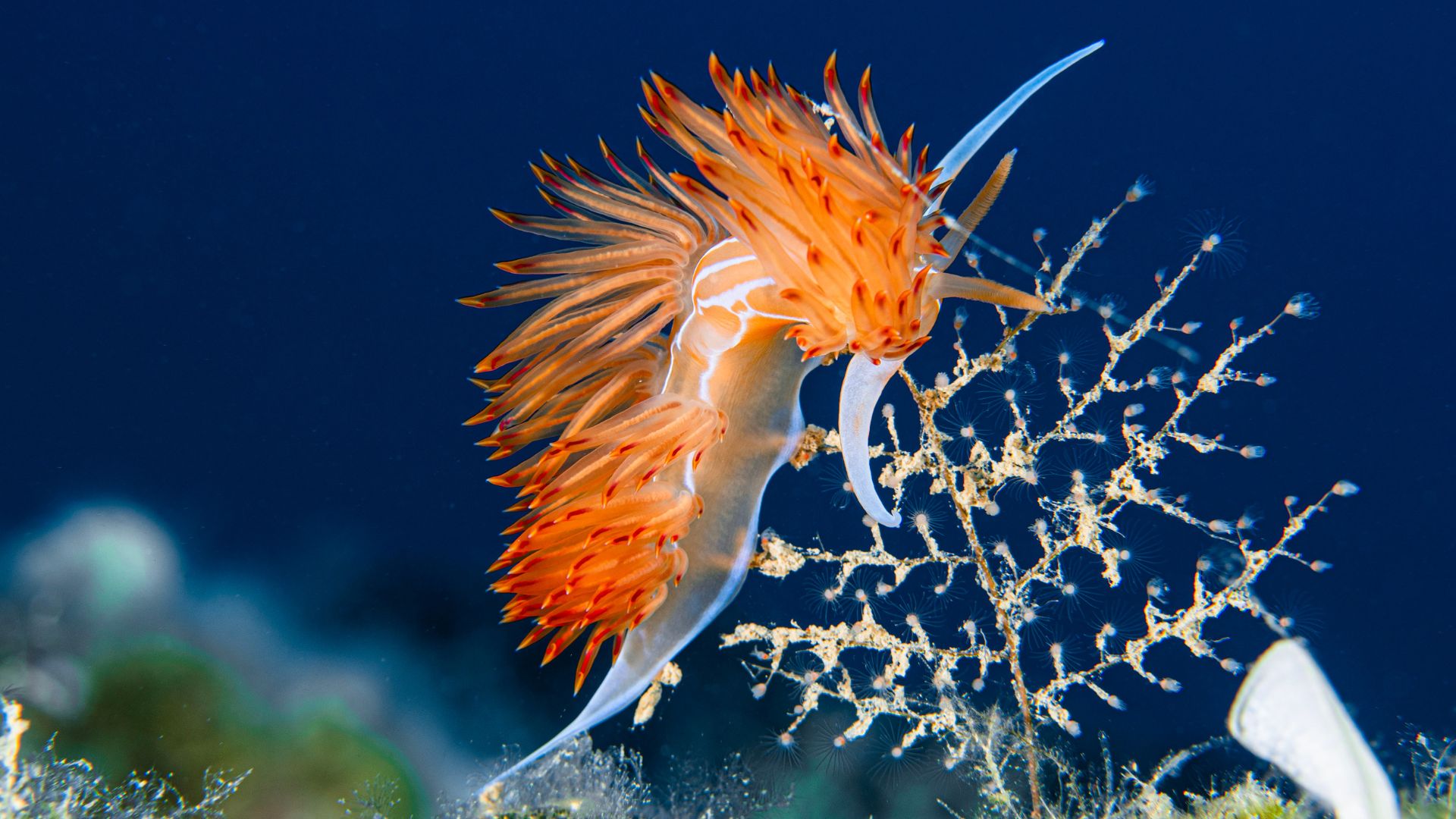
This soft-bodied mollusk, known as a nudibranch, often resembles a slug, but with a way better outfit. Featuring orange and peach whisps, a white-tinged body, and translucent horns, this sea creature is something to get excited about. Seen here, feeding in the Gökova Gulf of Turkey, you can also witness pretty nudibranchs in the Arctic and the Southern Ocean around Antarctica.
Moon wrasse
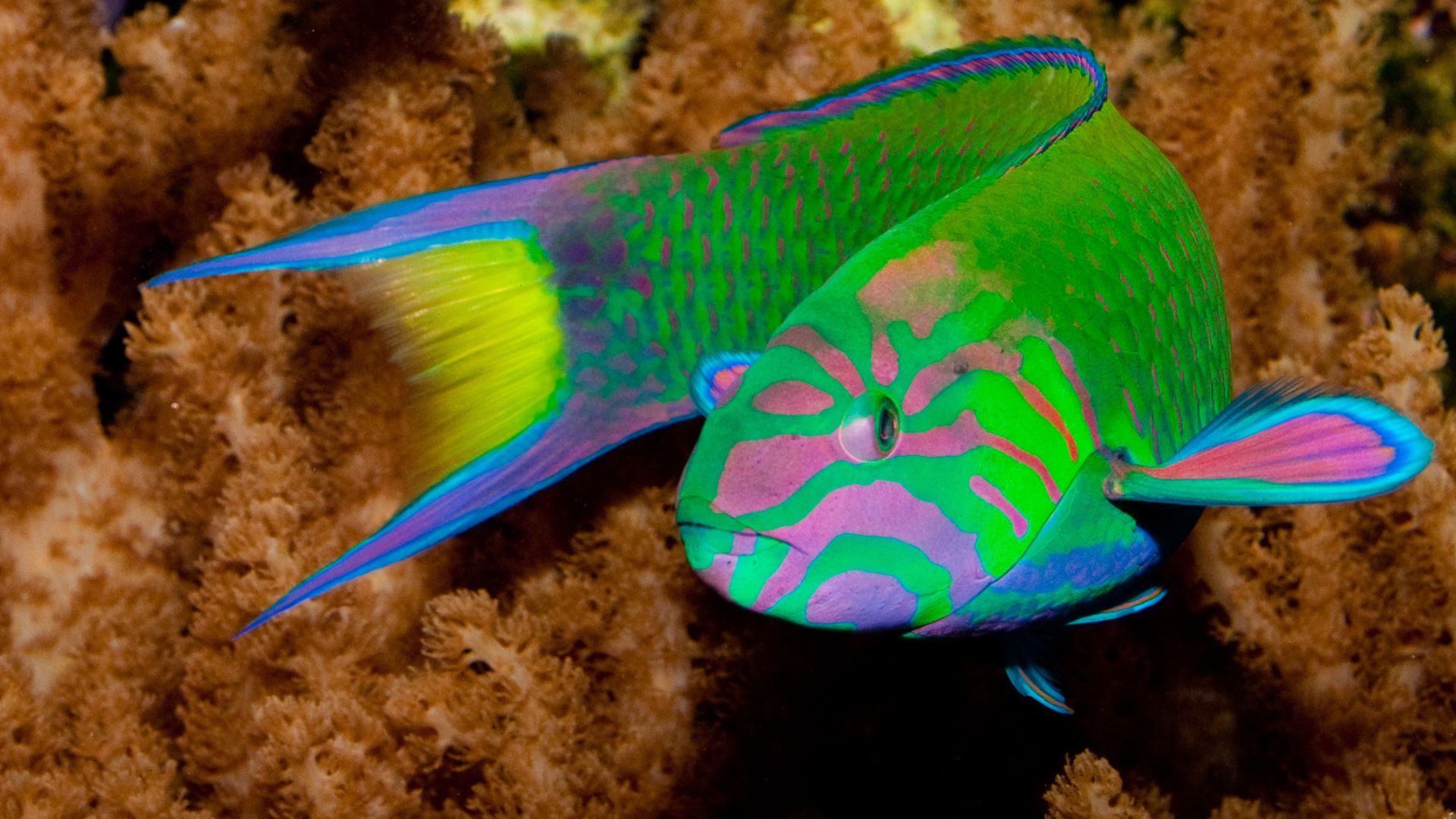
Neon green with hypnotic pink stripes with pops of purple, yellow, and blue, you’d be forgiven in thinking this bold fish was a figment of a child’s imagination but here it is, alive and well, in all its splendid glory living in reefs around the western Pacific Ocean. These active fish barely rest, swimming endlessly to protect their territory, they’ve also been known to nip other fish who venture too close.







